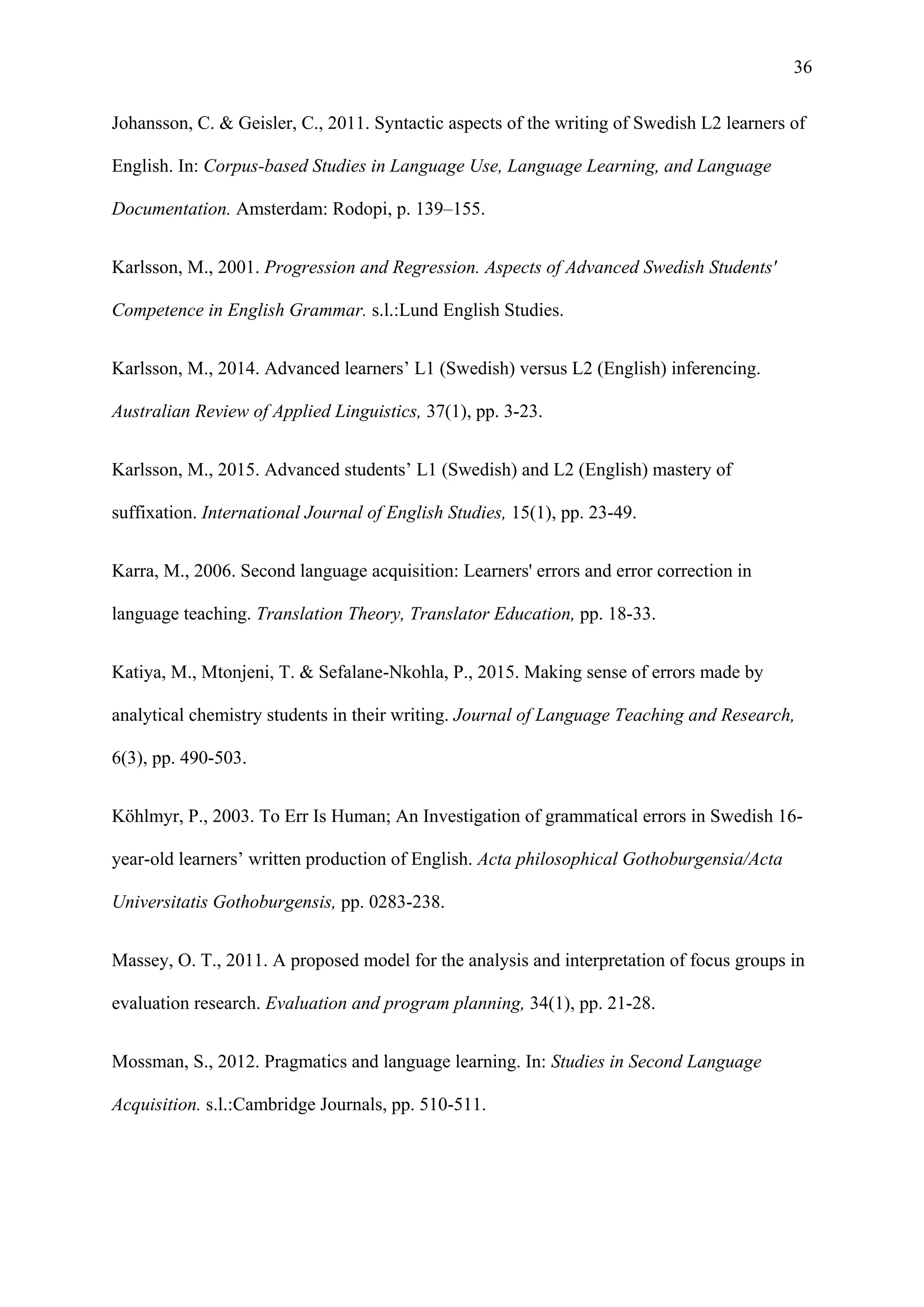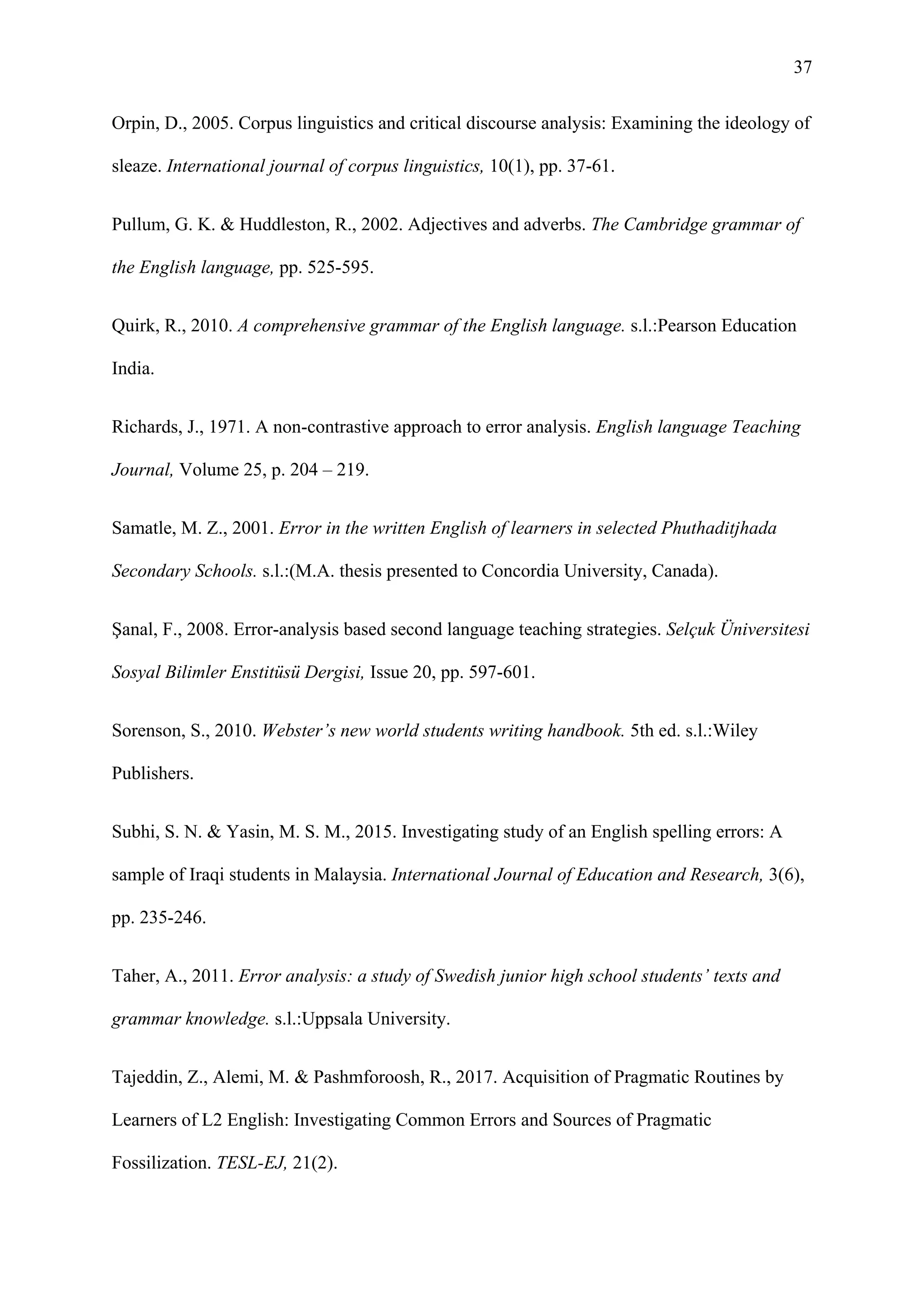This document discusses grammatical errors made by Swedish students learning English as a second language. It aims to analyze and compare the types of errors made by junior and senior secondary students. The study will identify the most common grammatical errors, examine similarities and differences between the two groups, and explore possible reasons for differences. Understanding learners' errors can help improve teaching methods and aid students in better acquiring English grammar. The document provides background on second language acquisition and error analysis theory, which serves as the framework for the study.
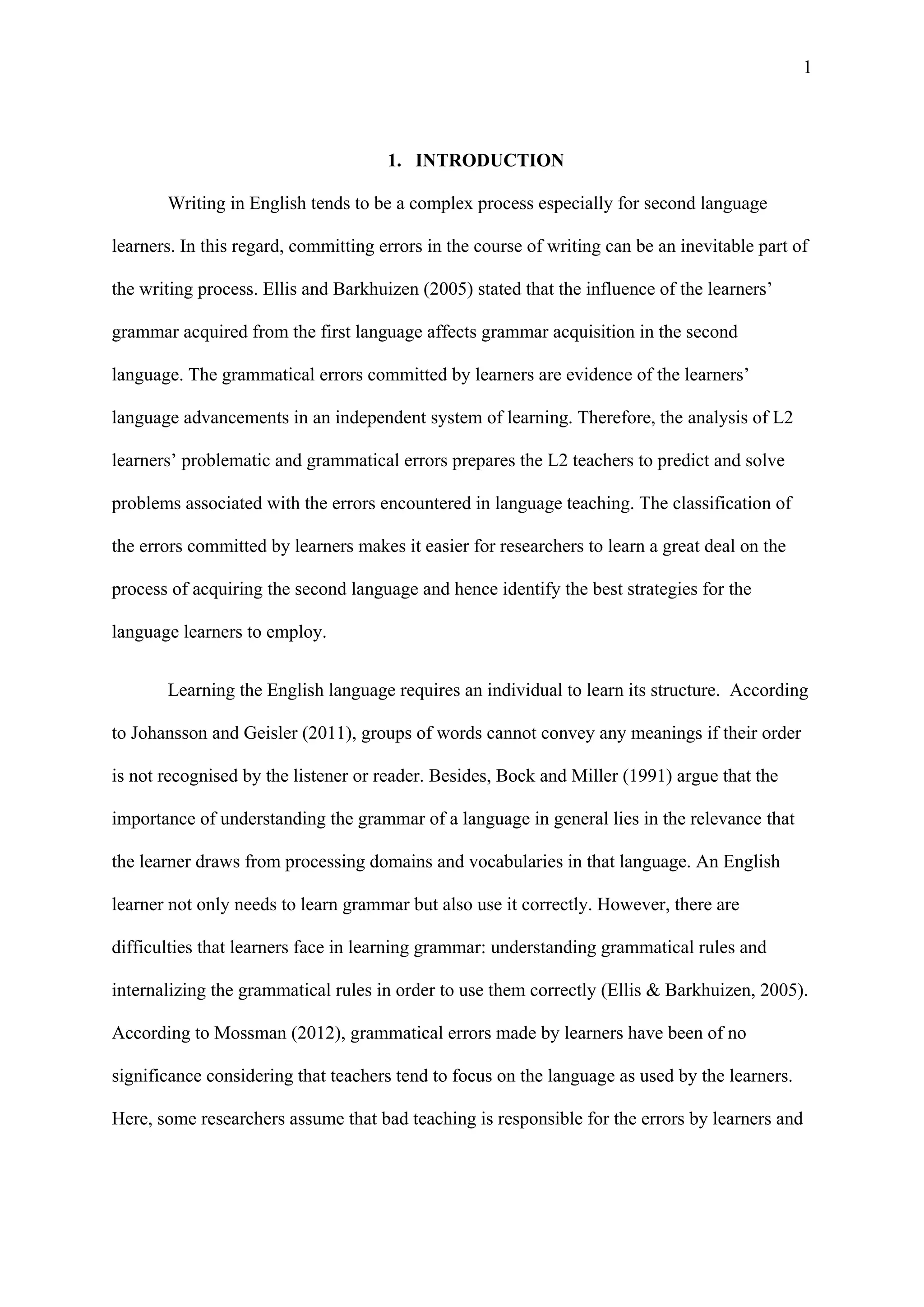
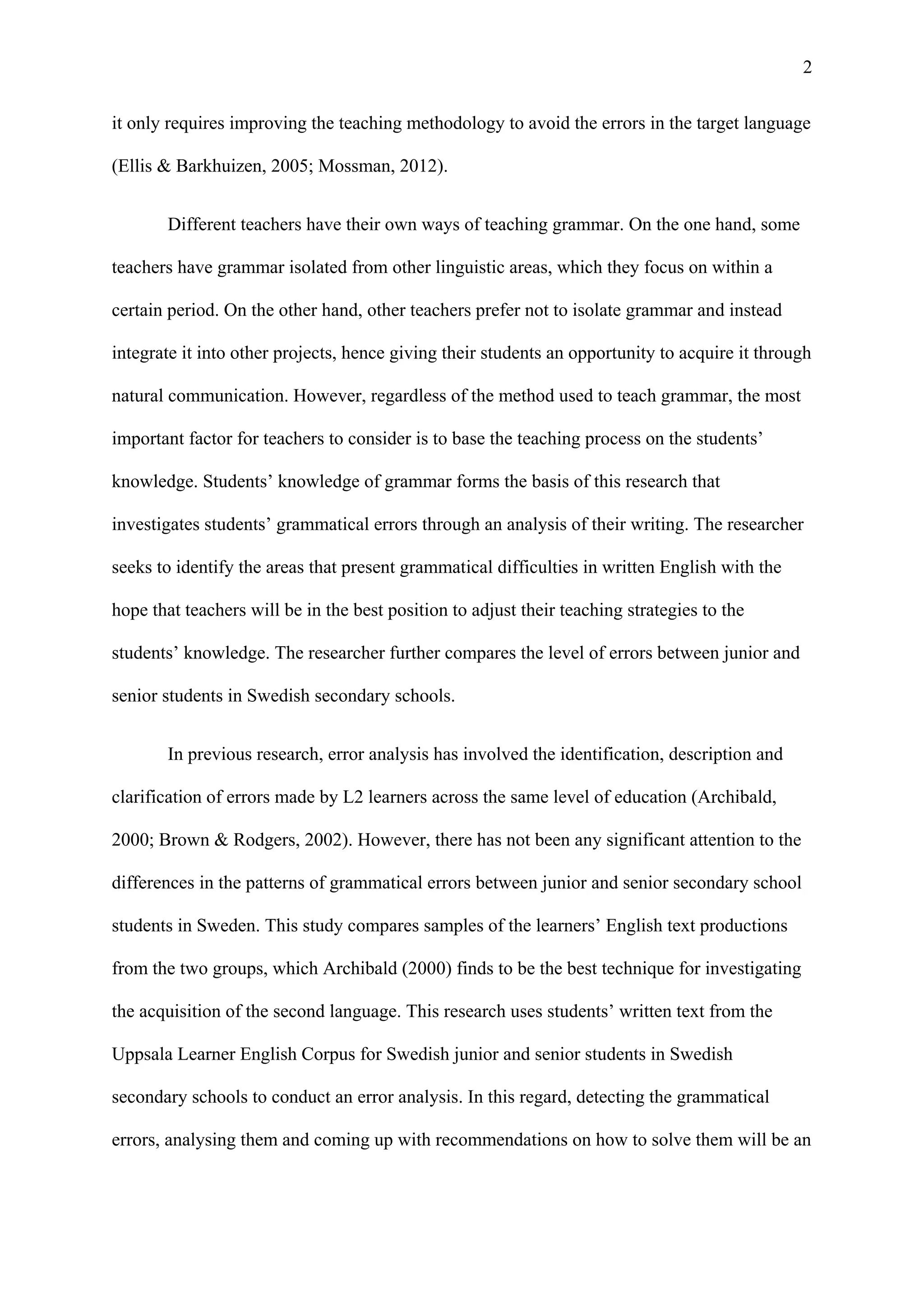
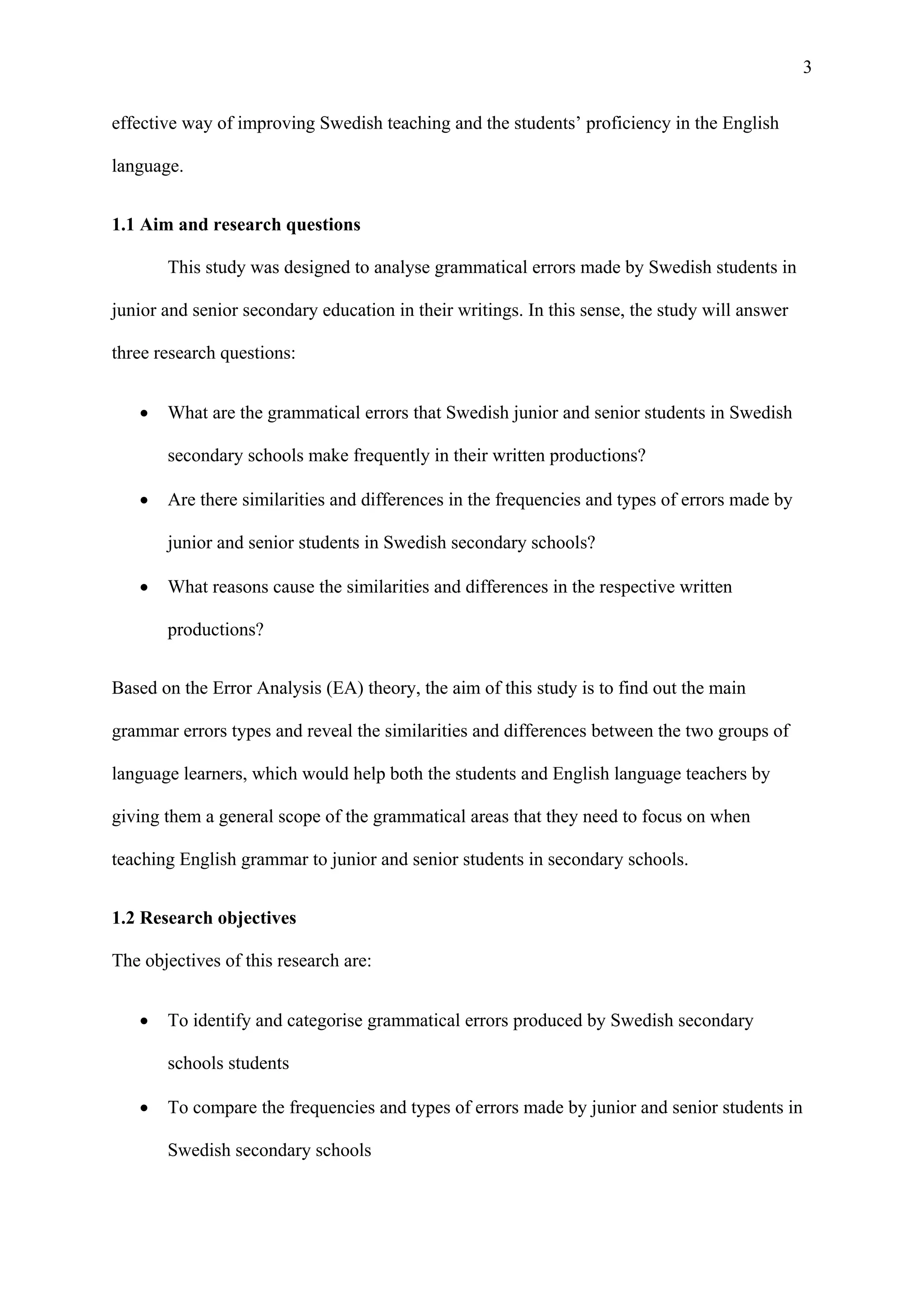
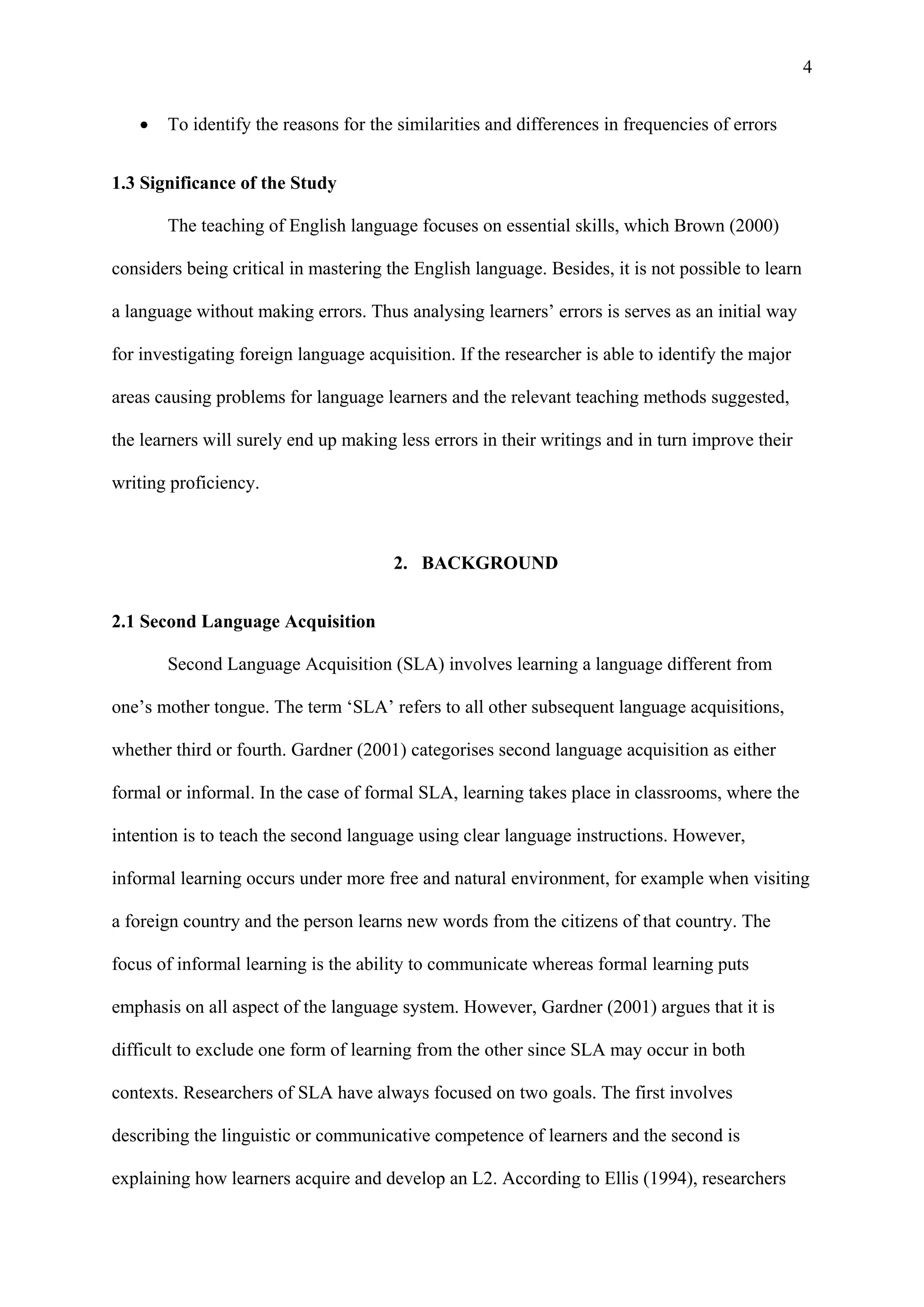
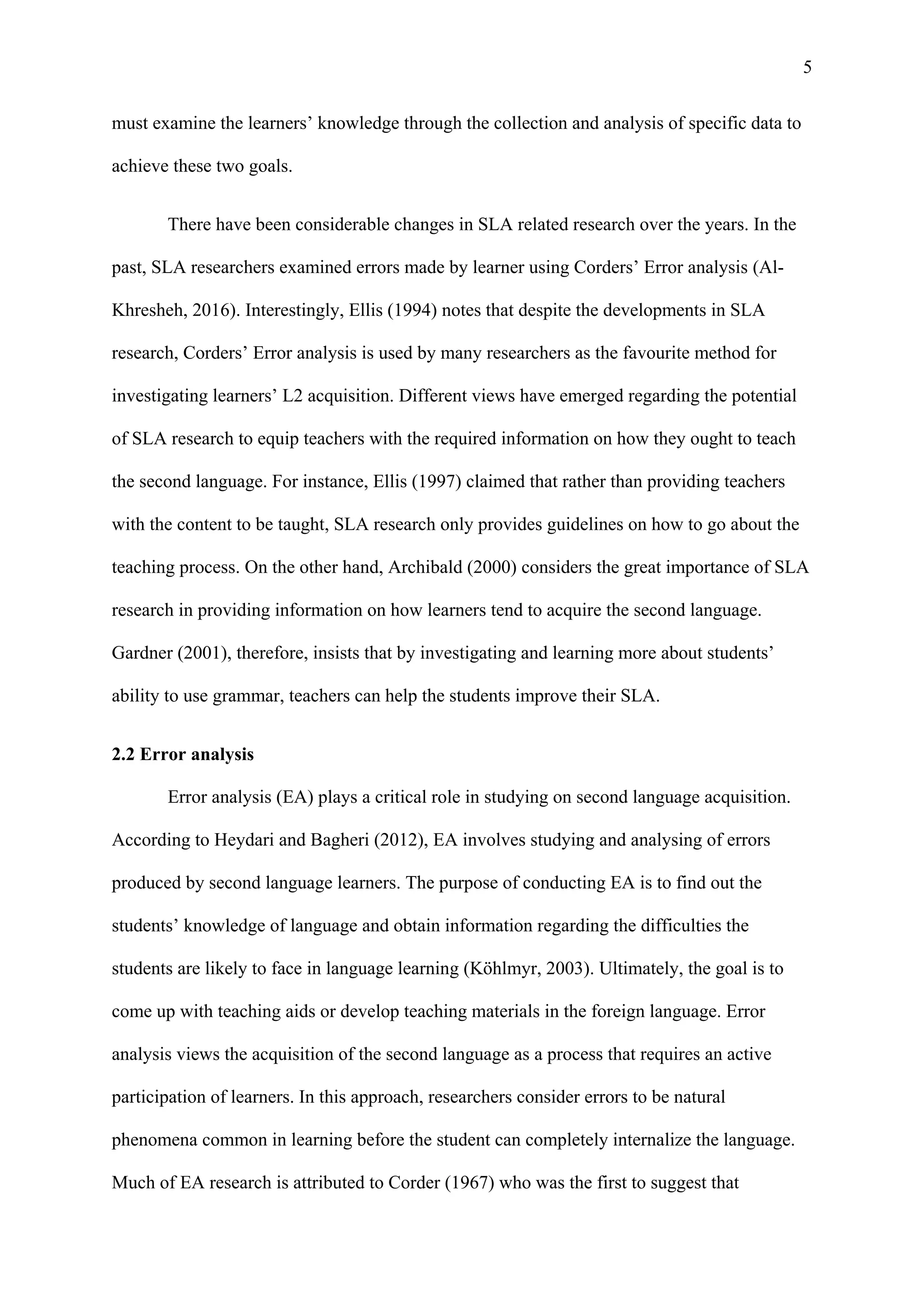
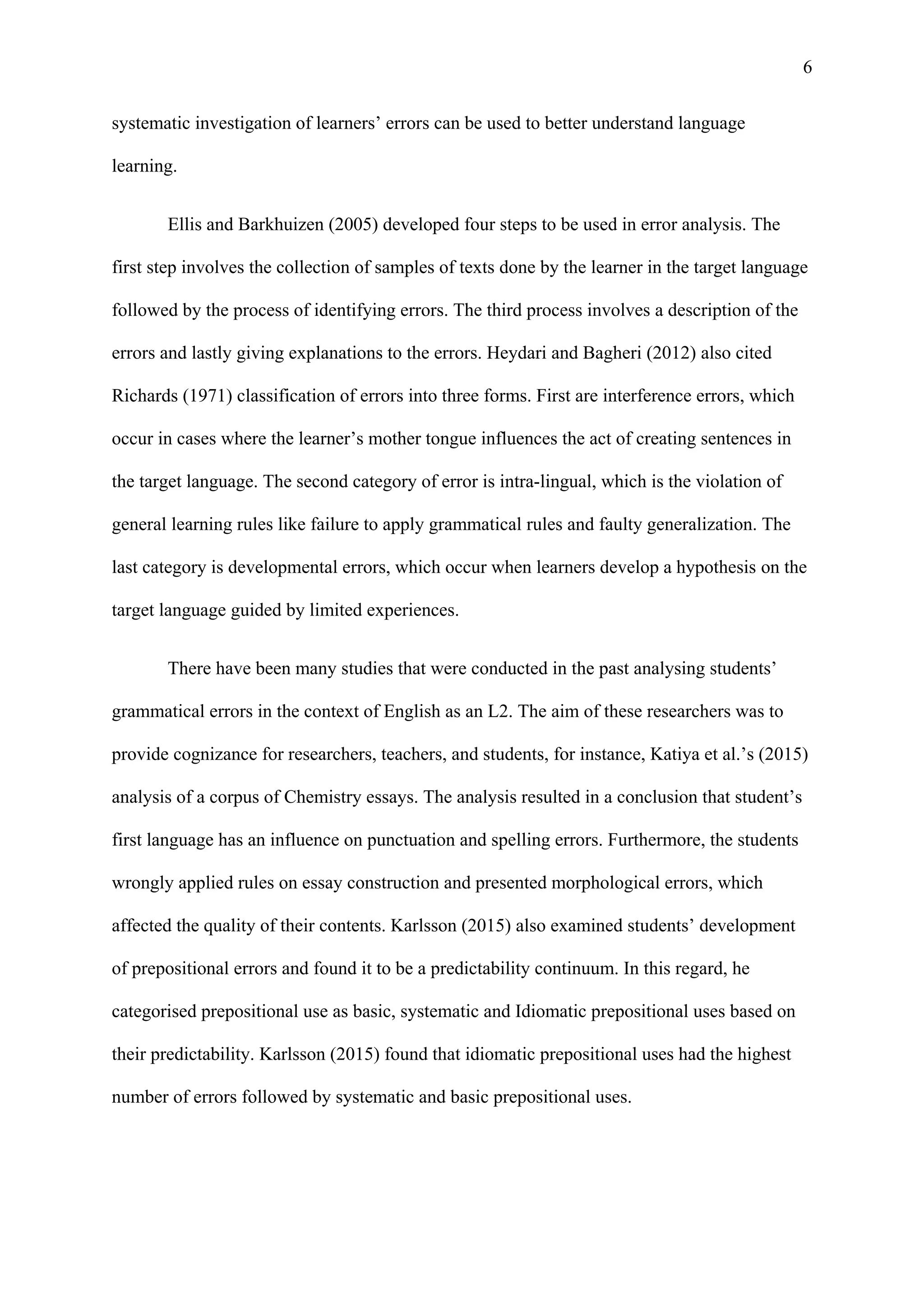
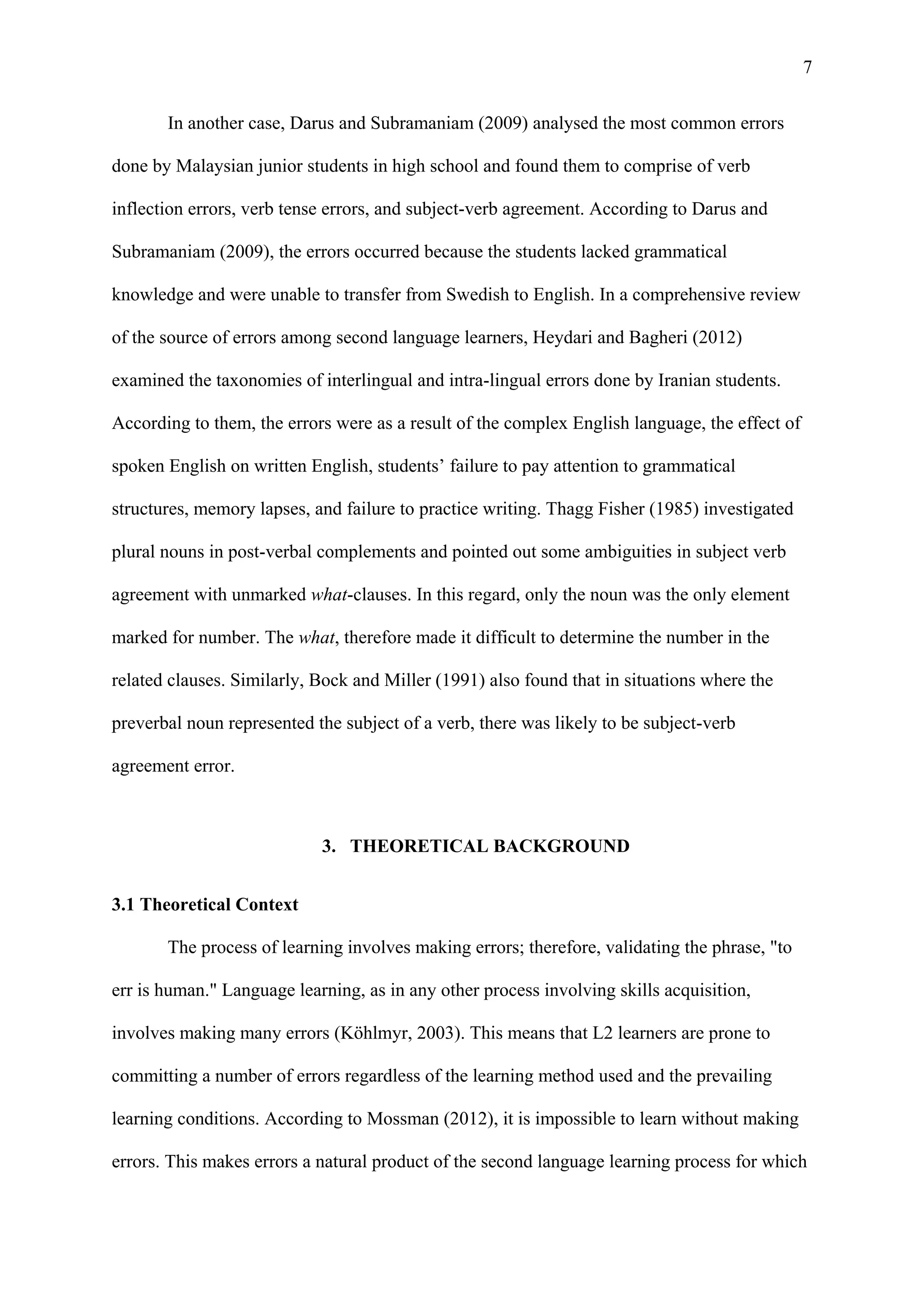
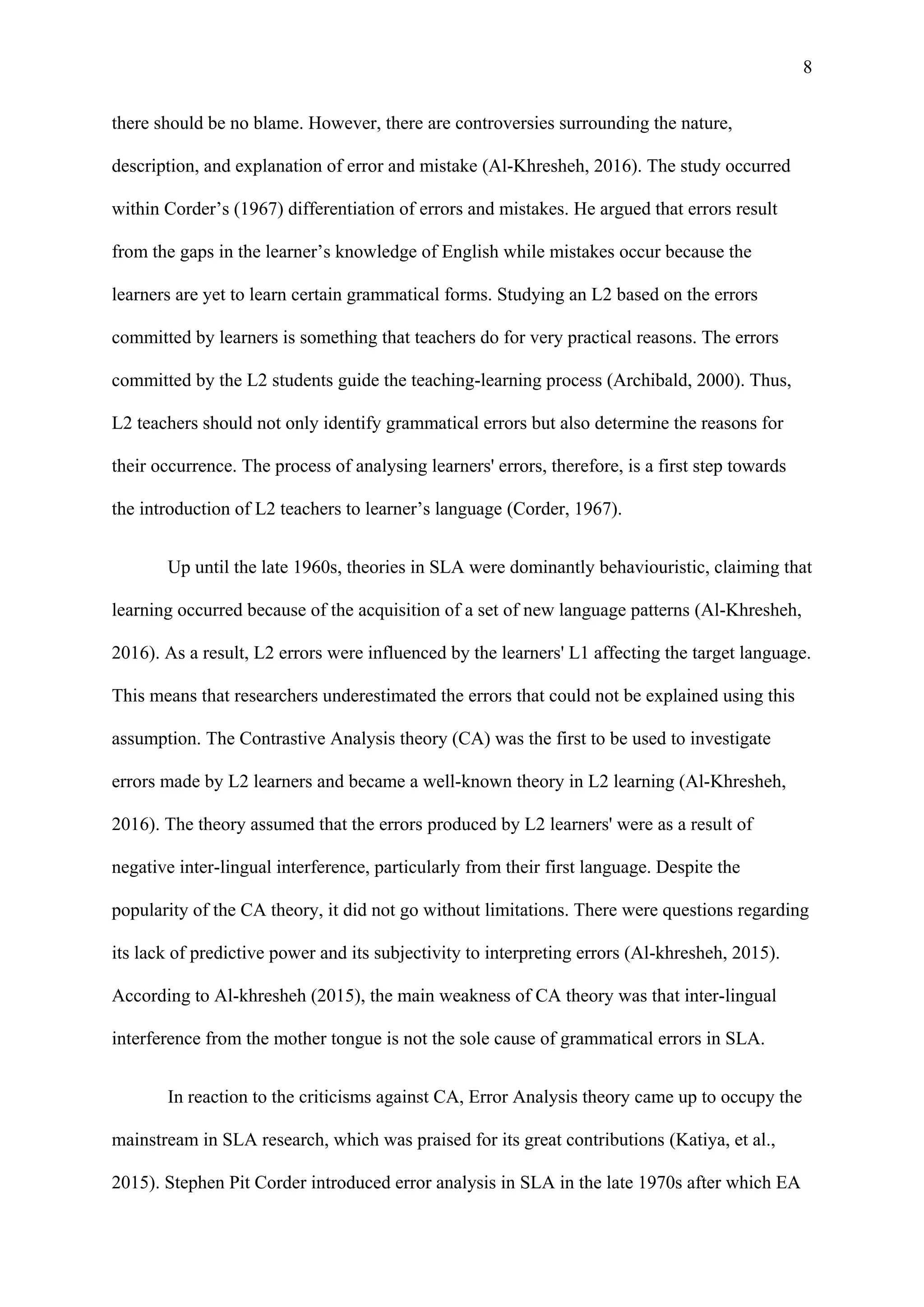
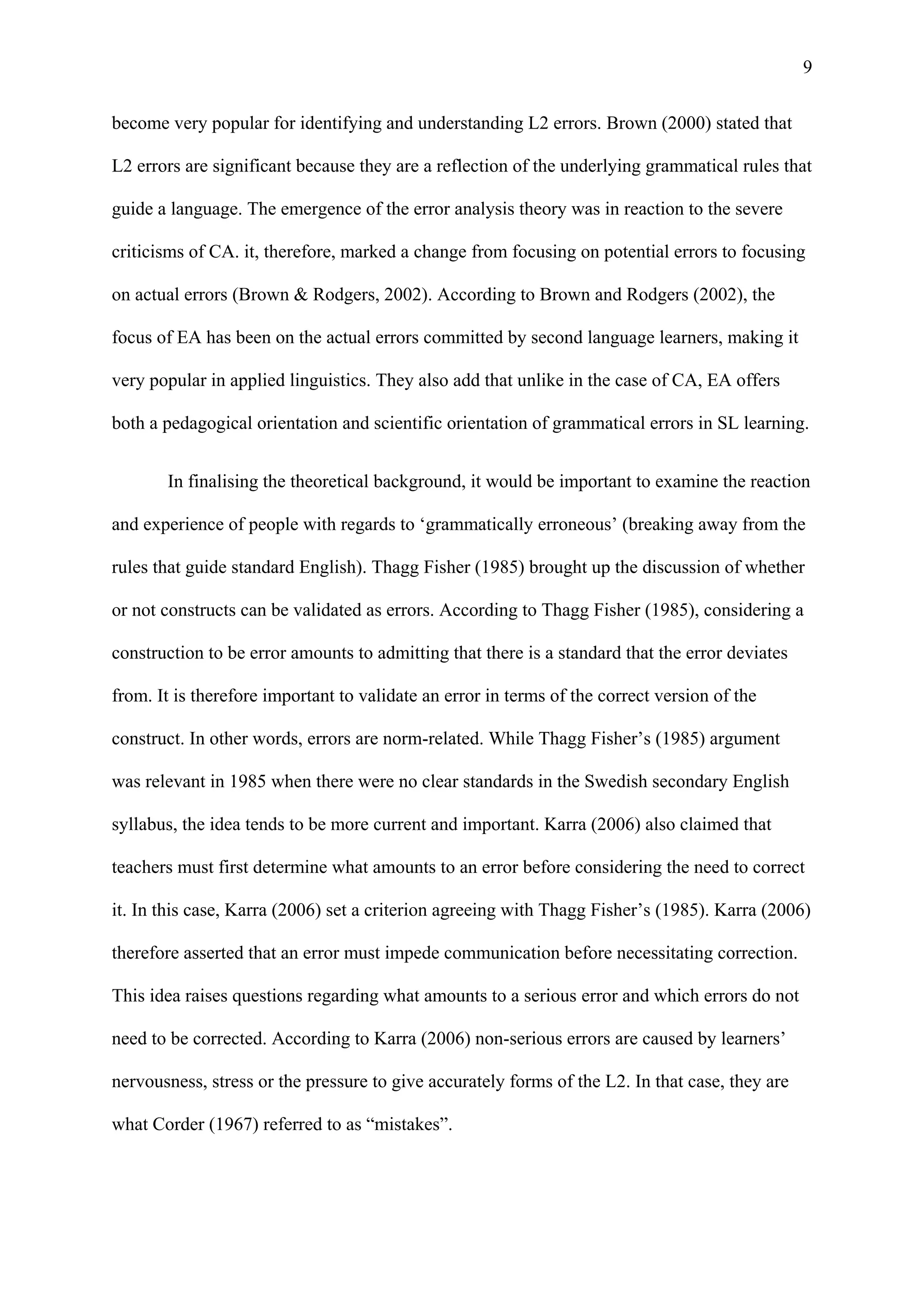
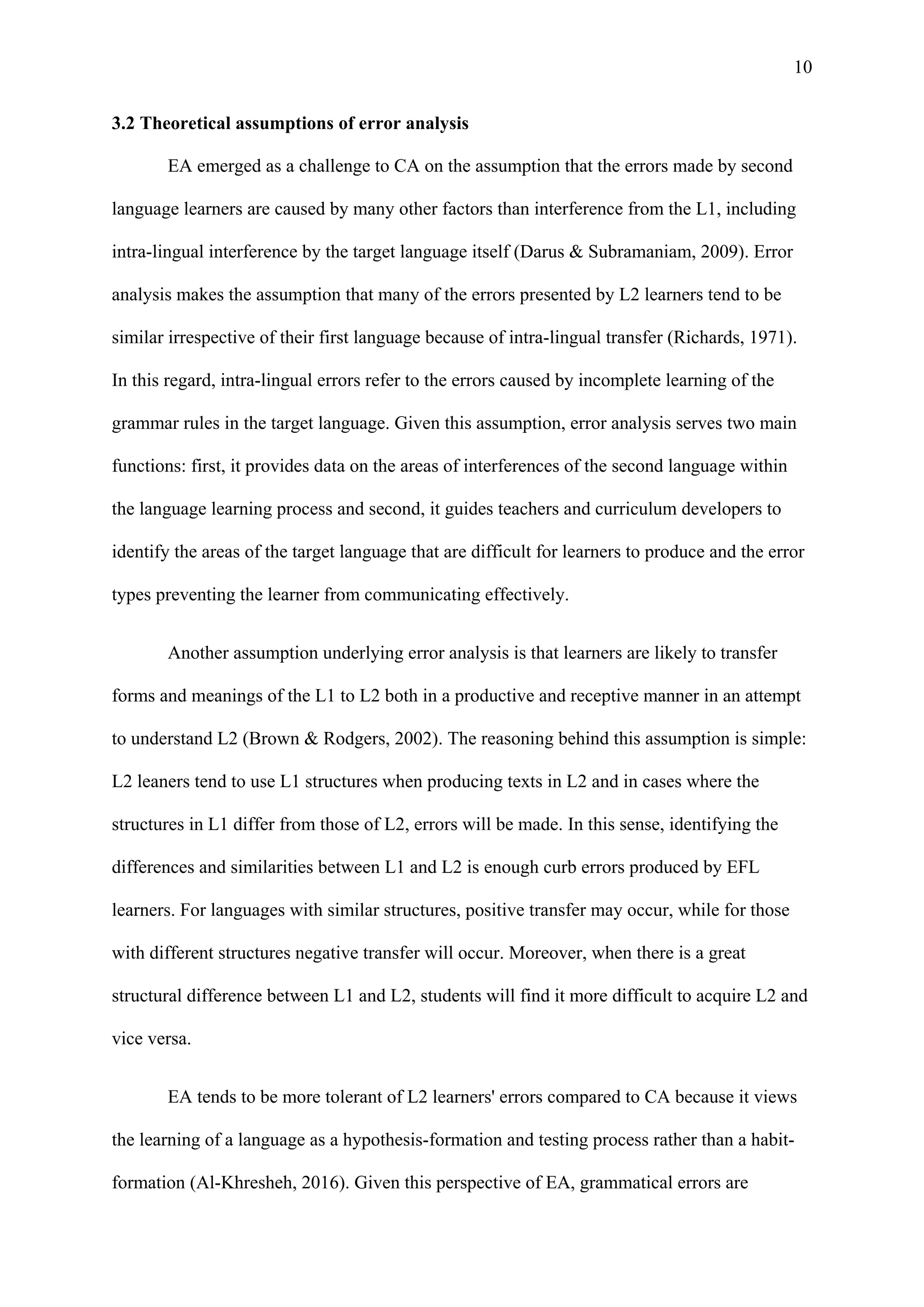
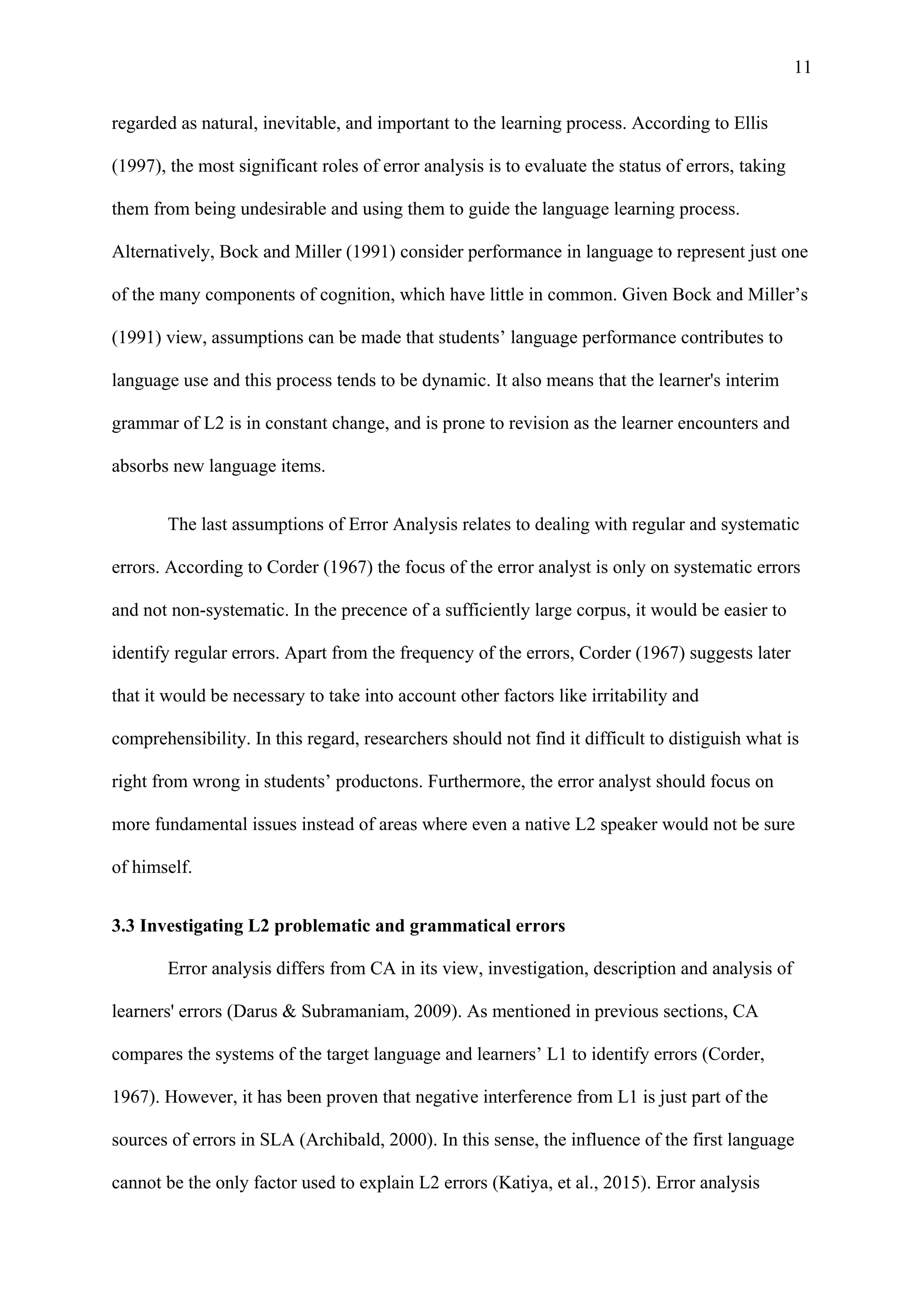
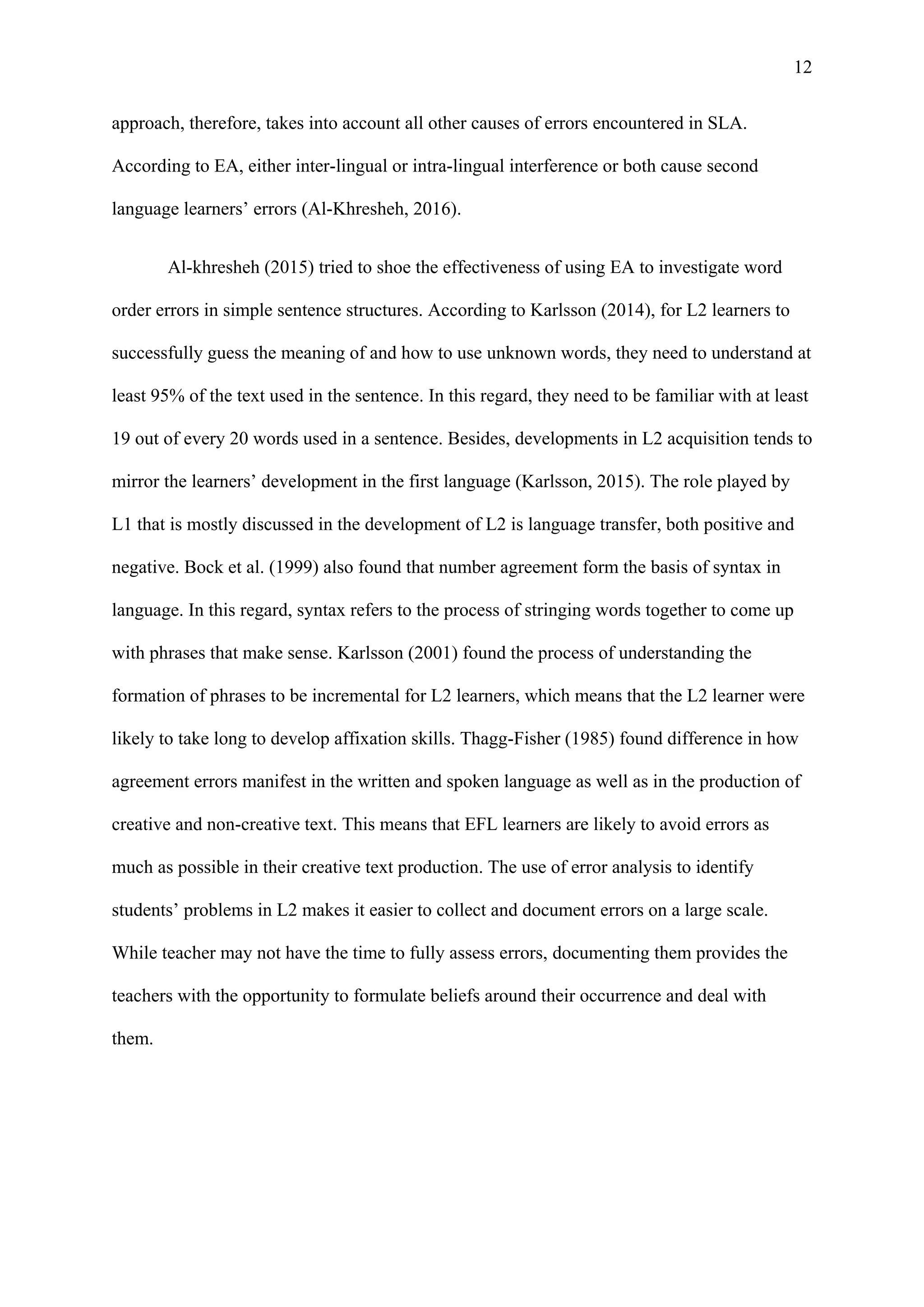
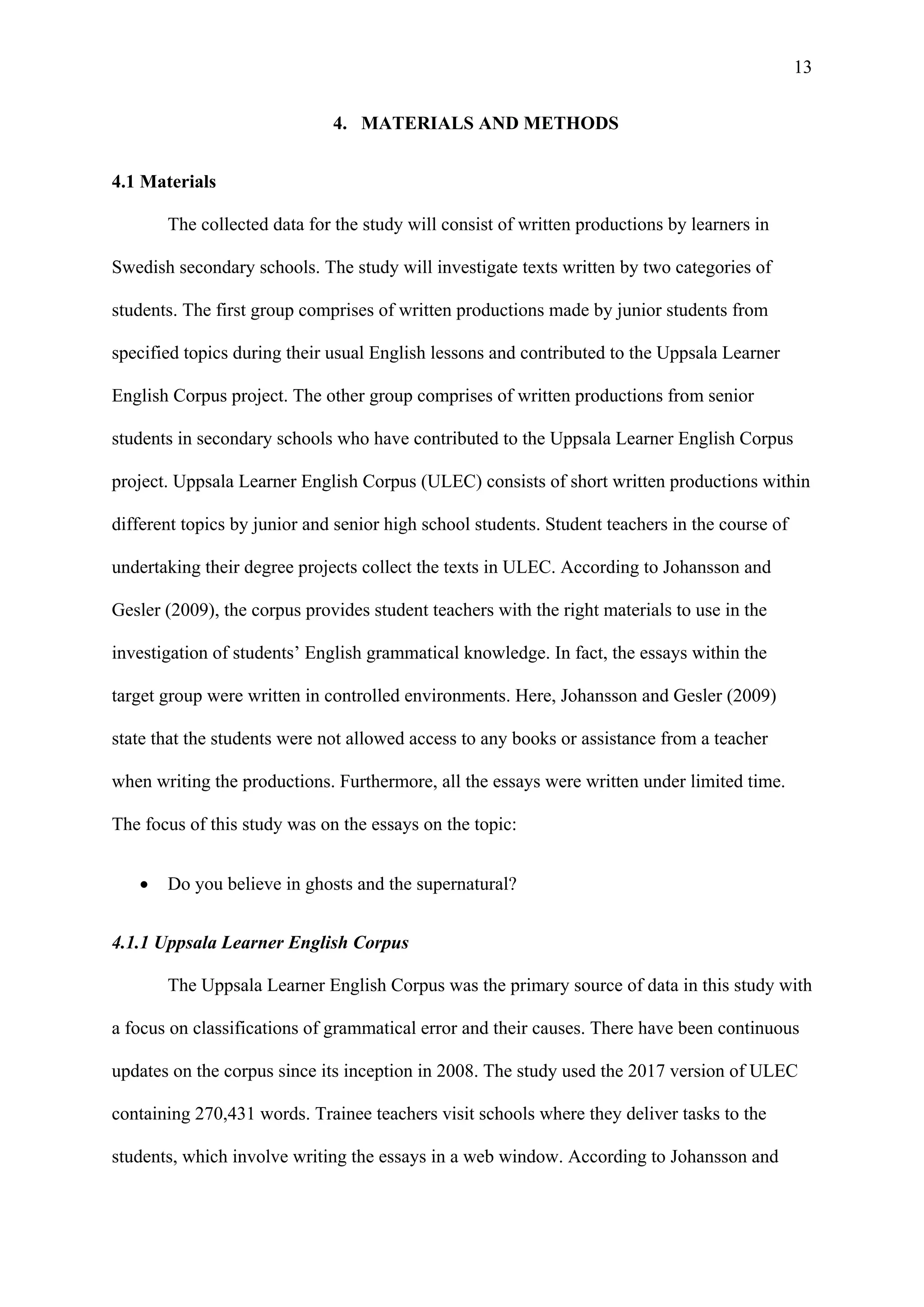


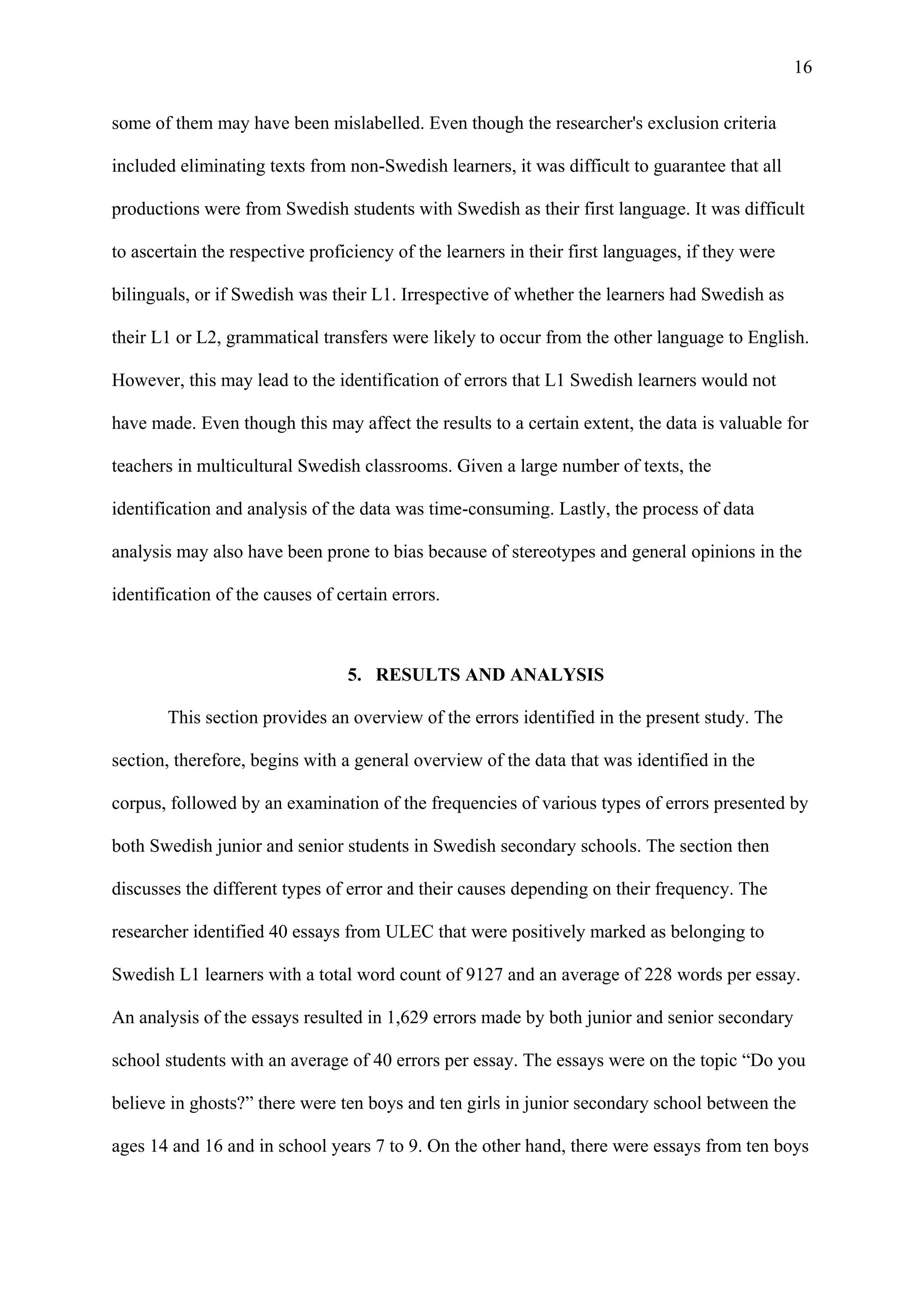
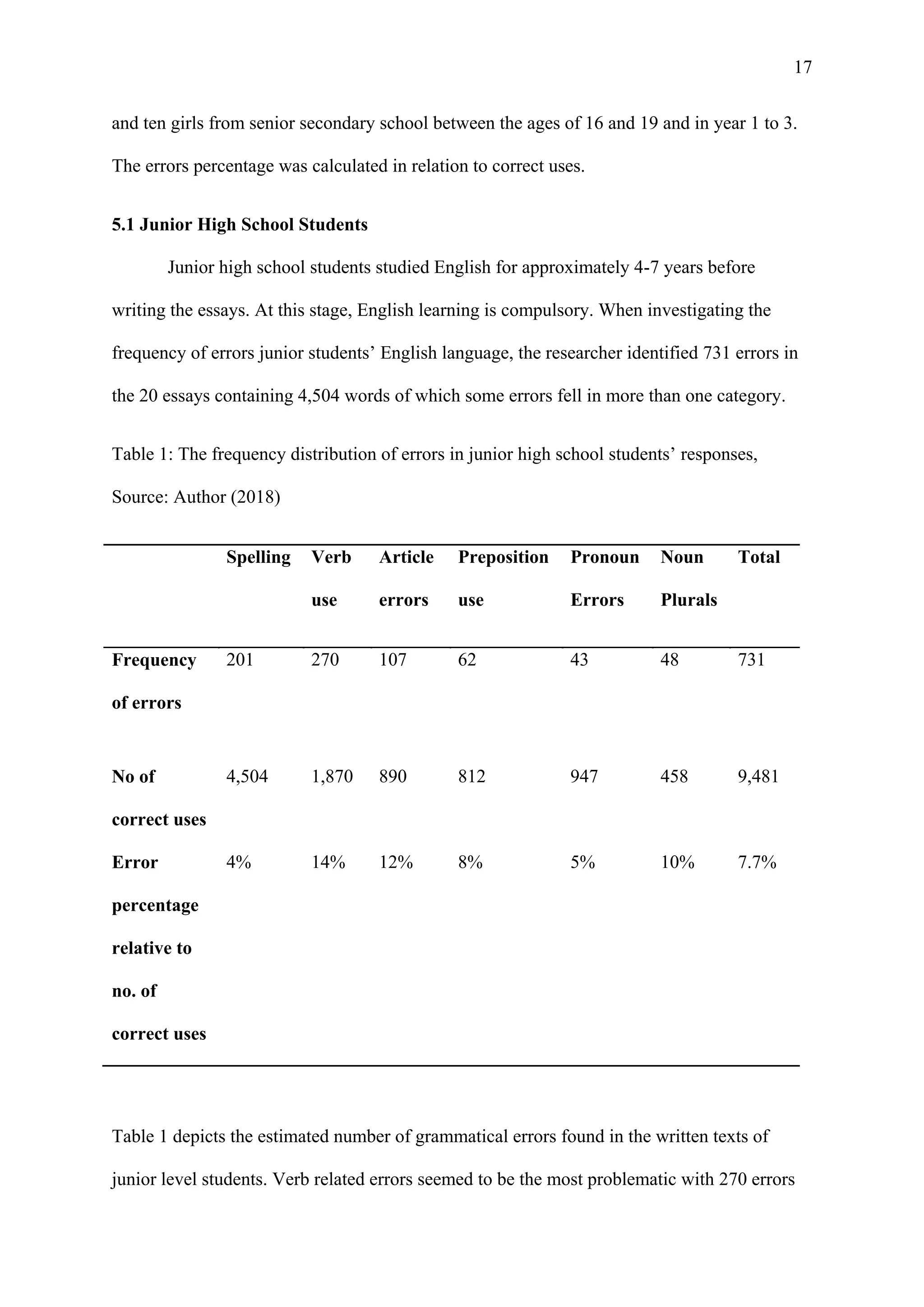
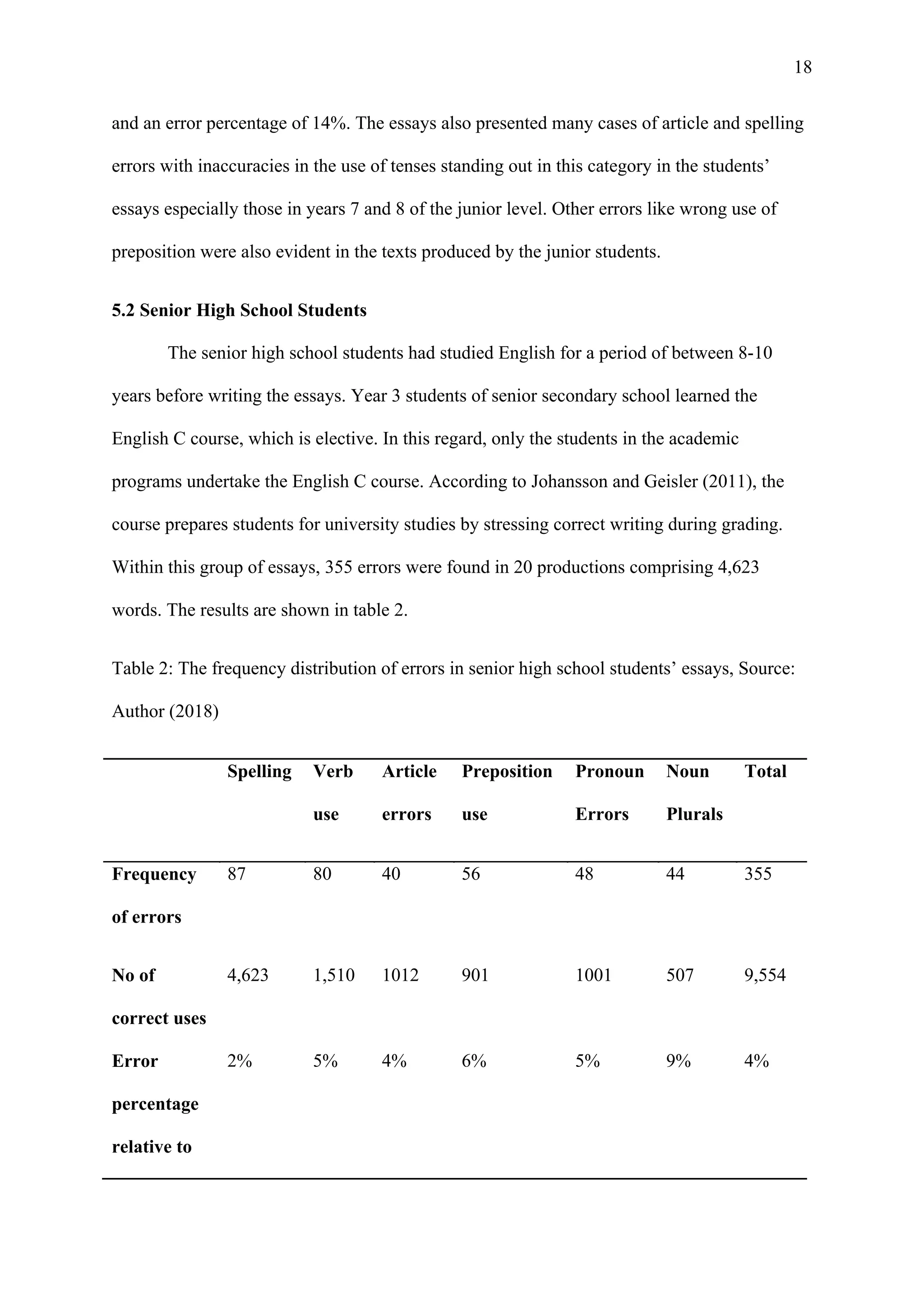

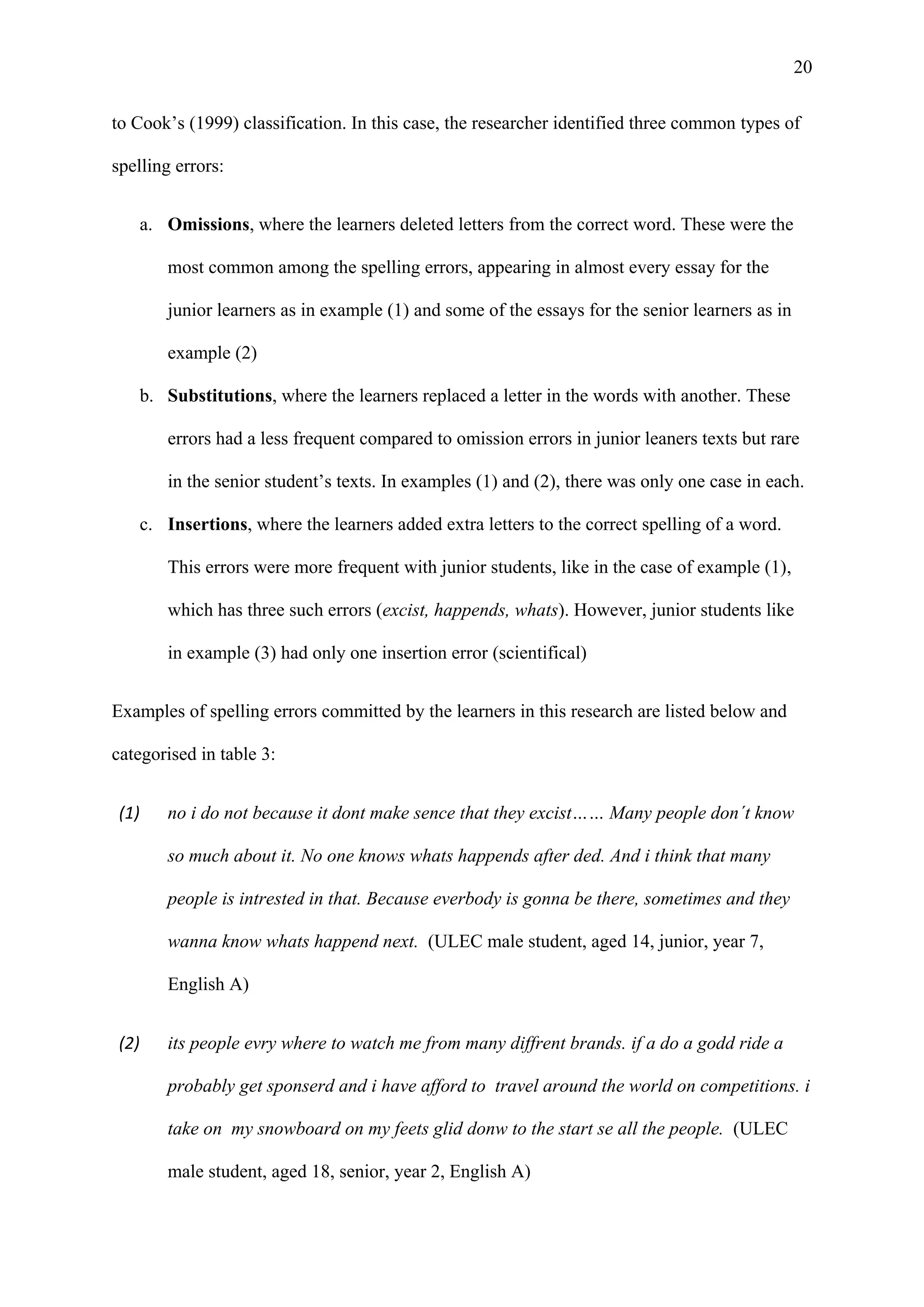
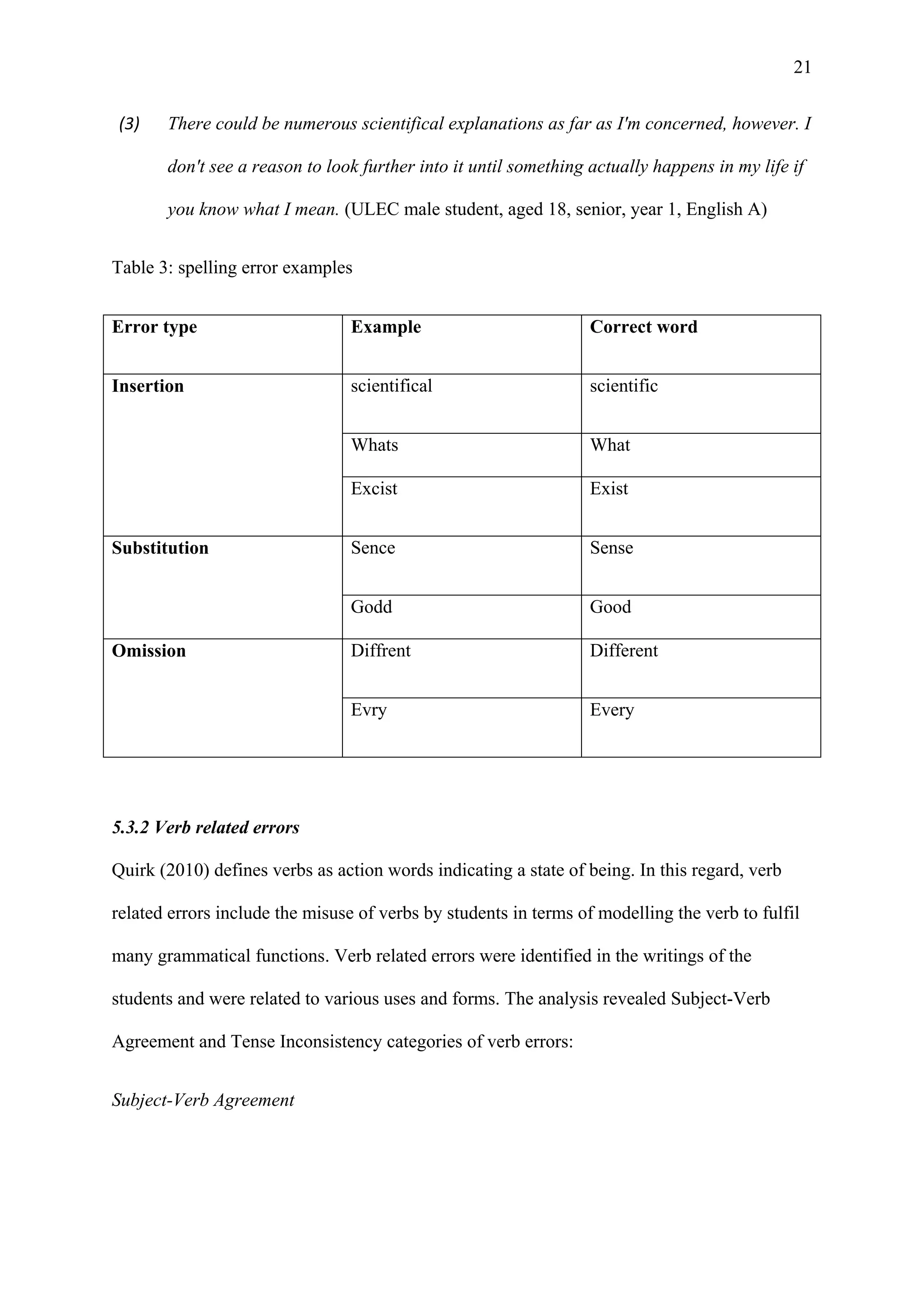
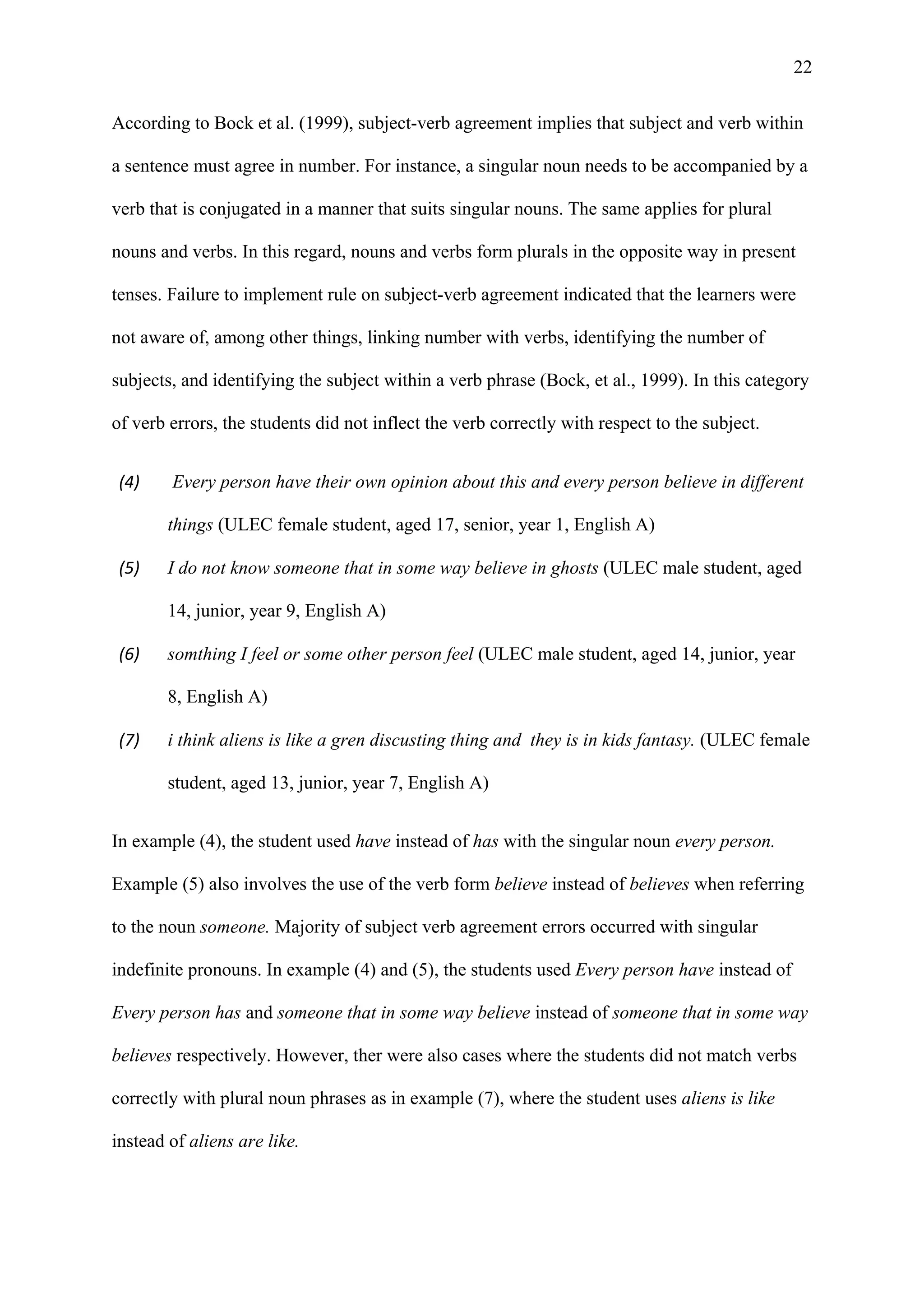
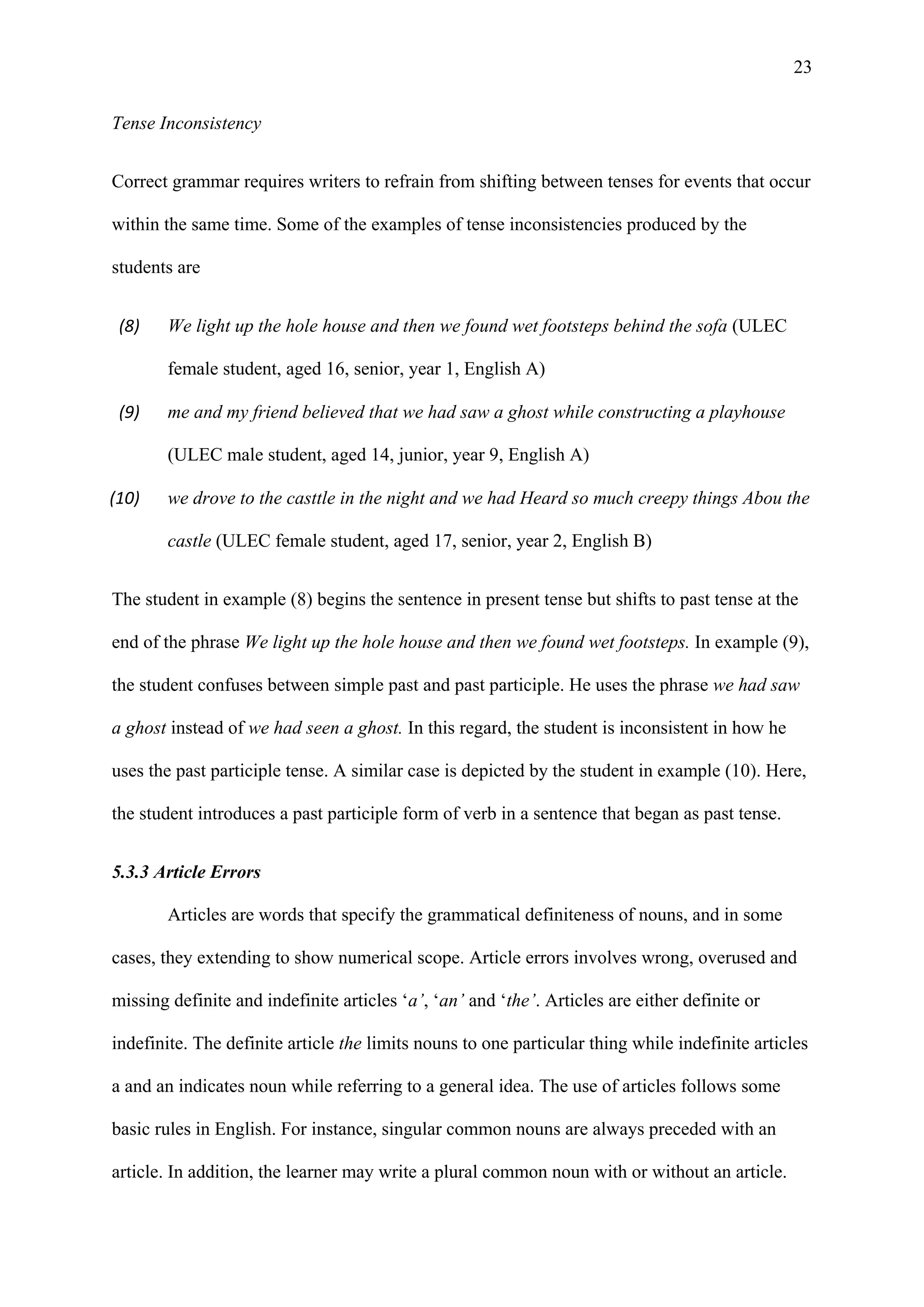
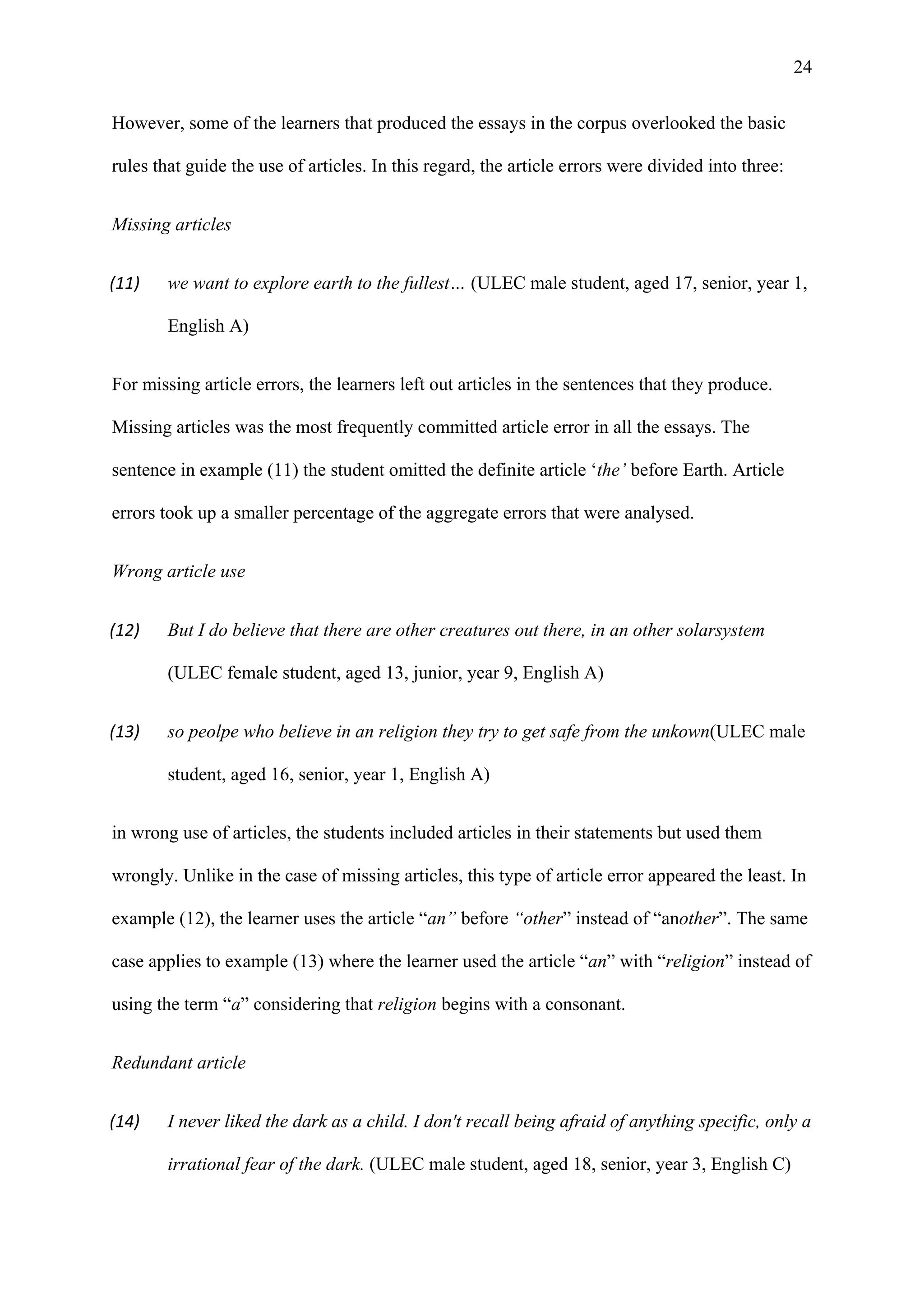

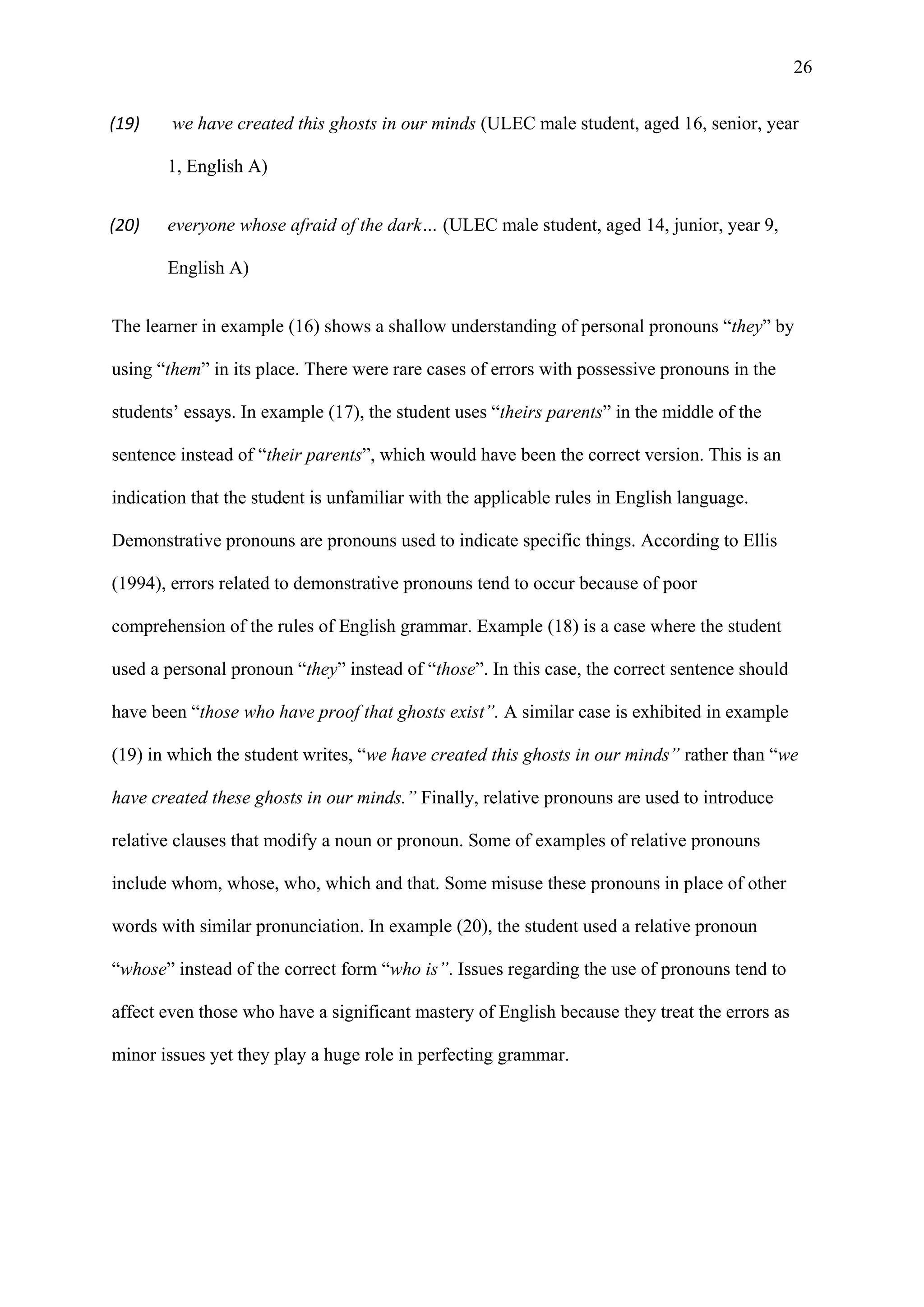
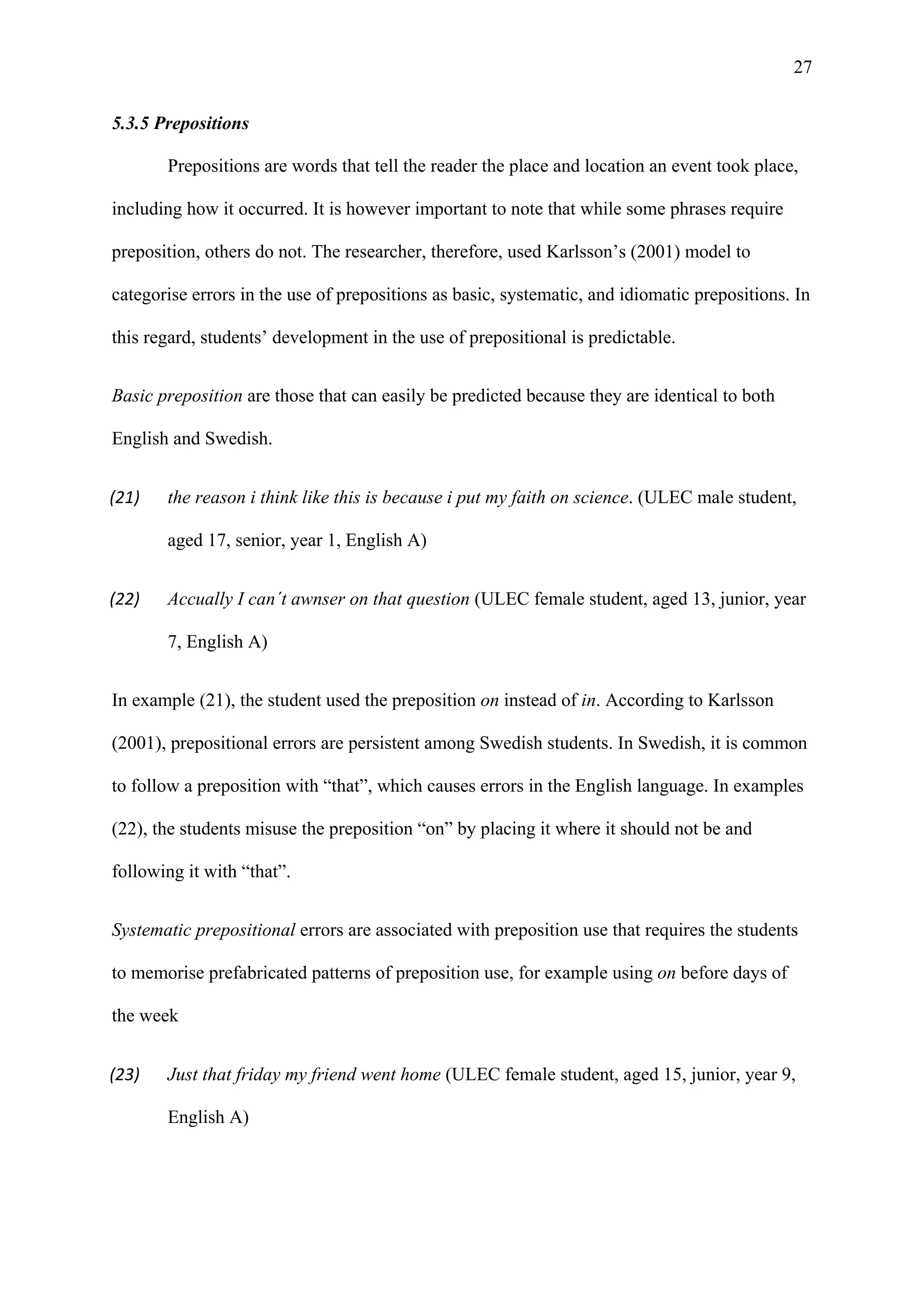
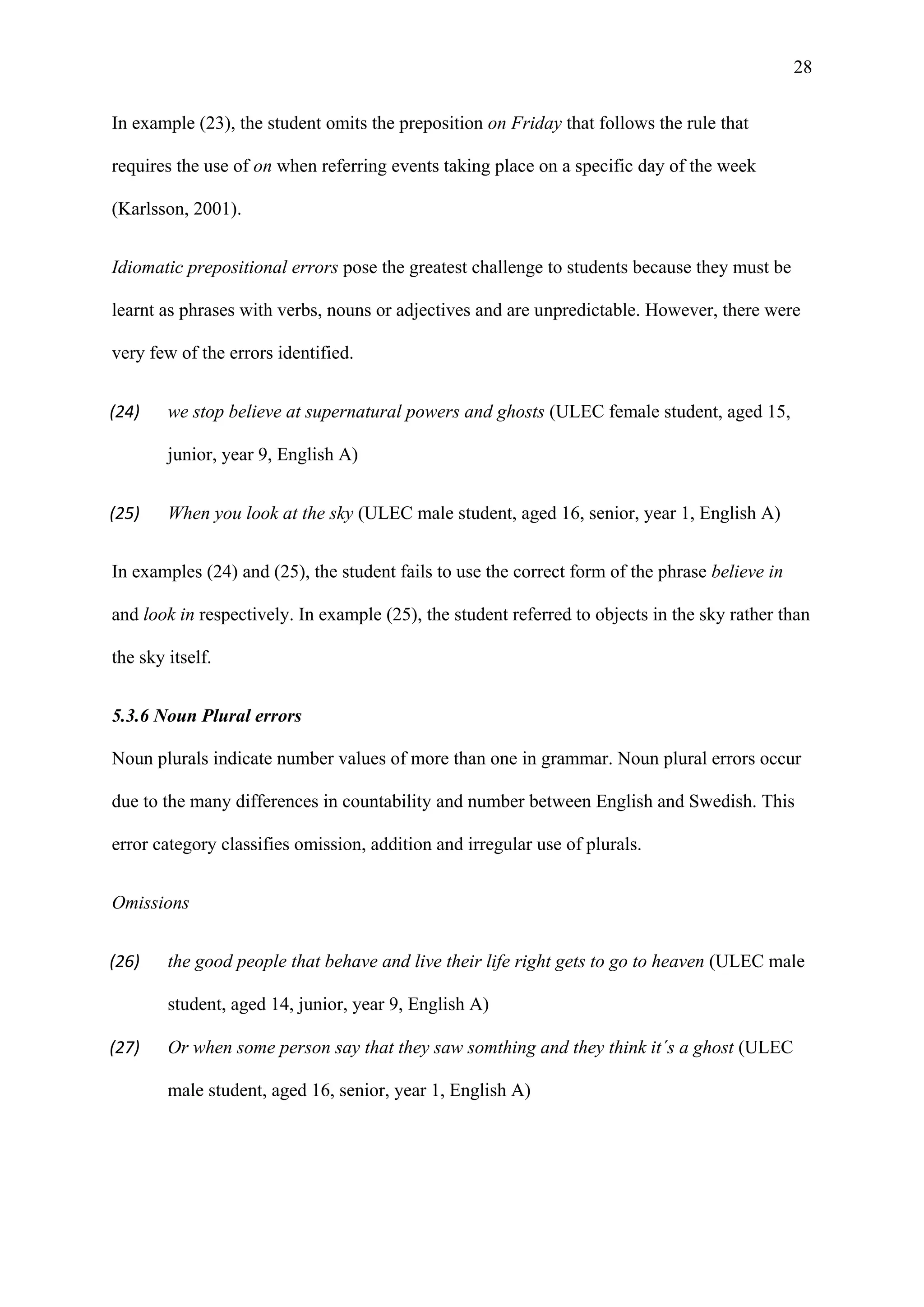
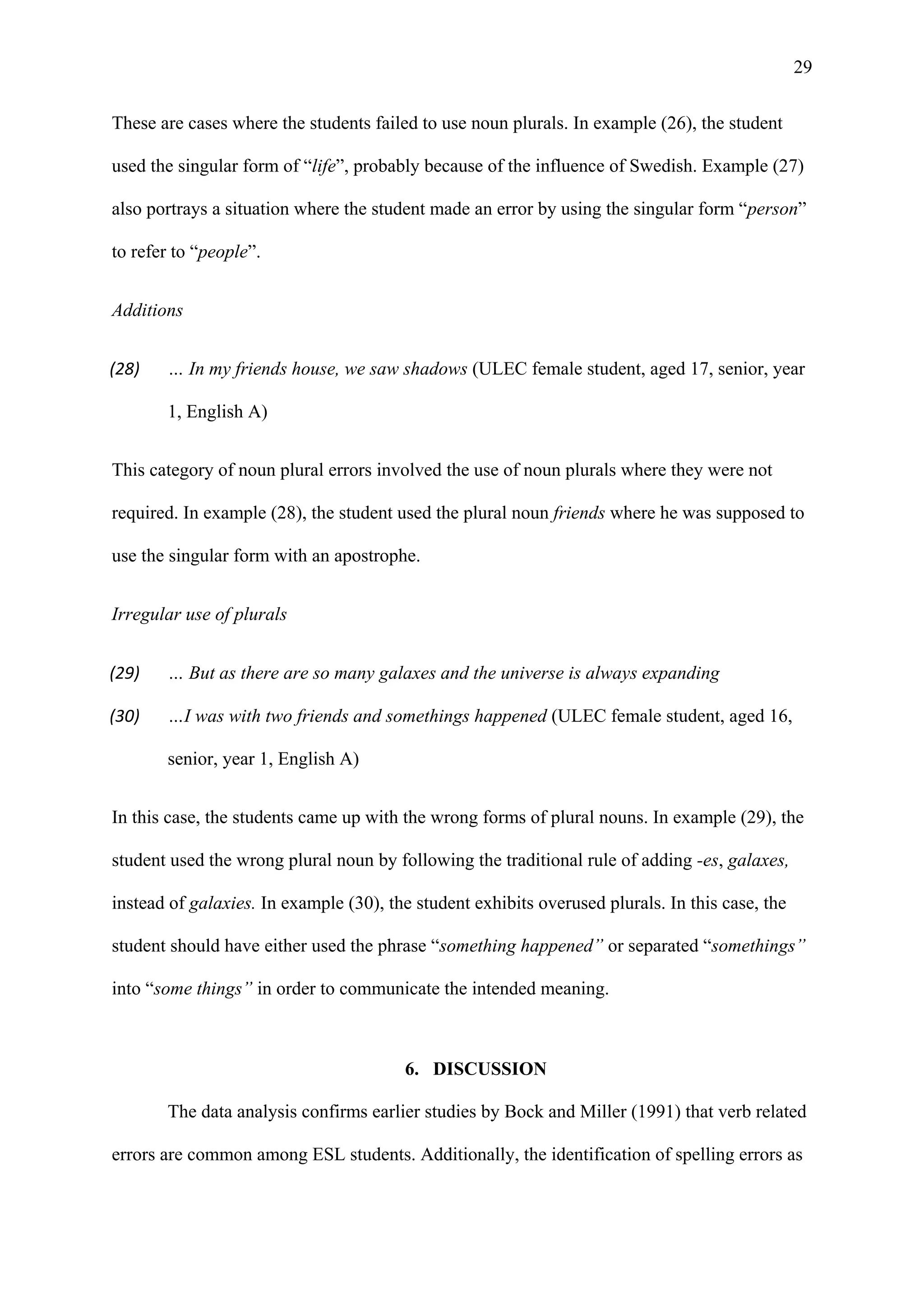
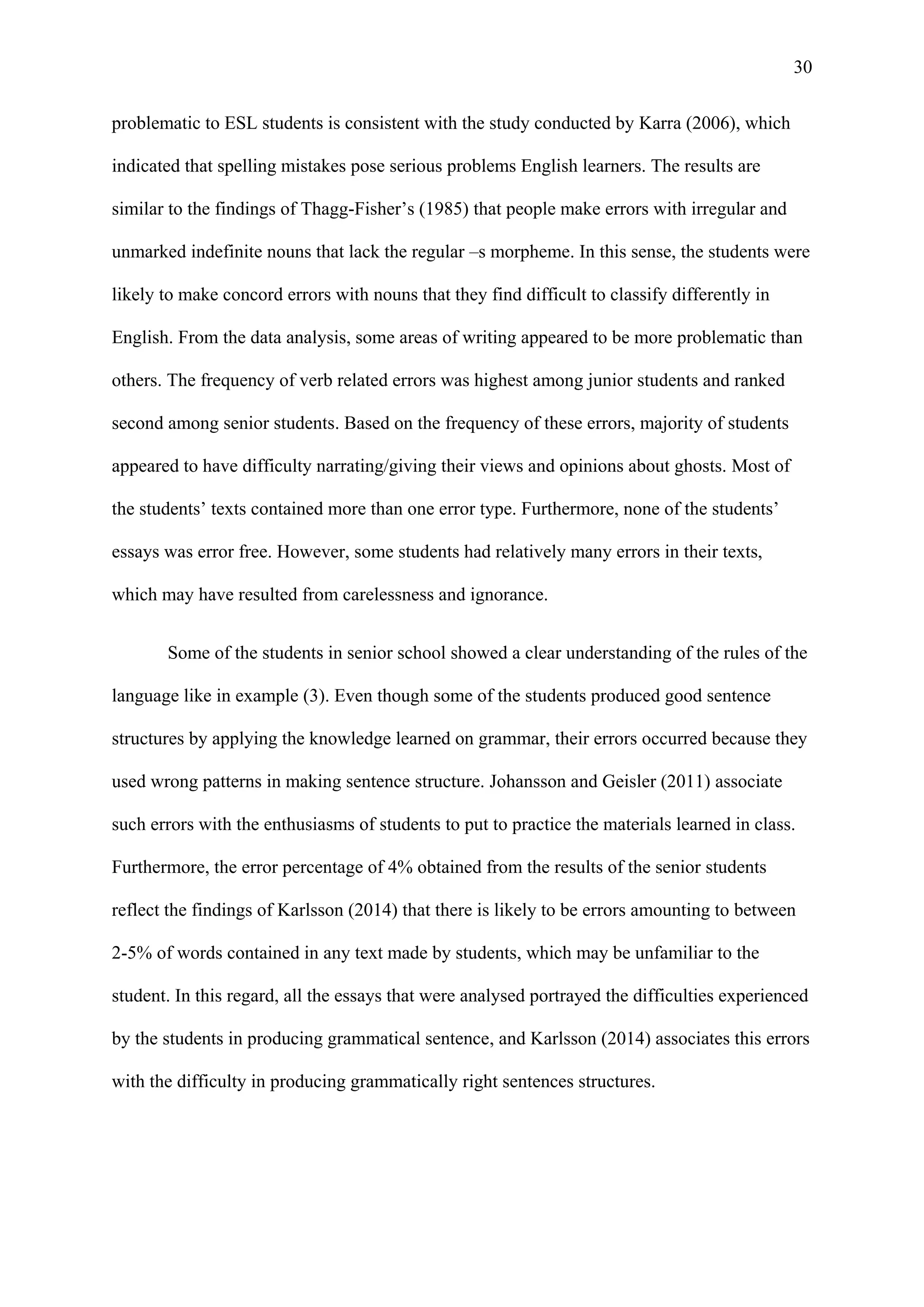
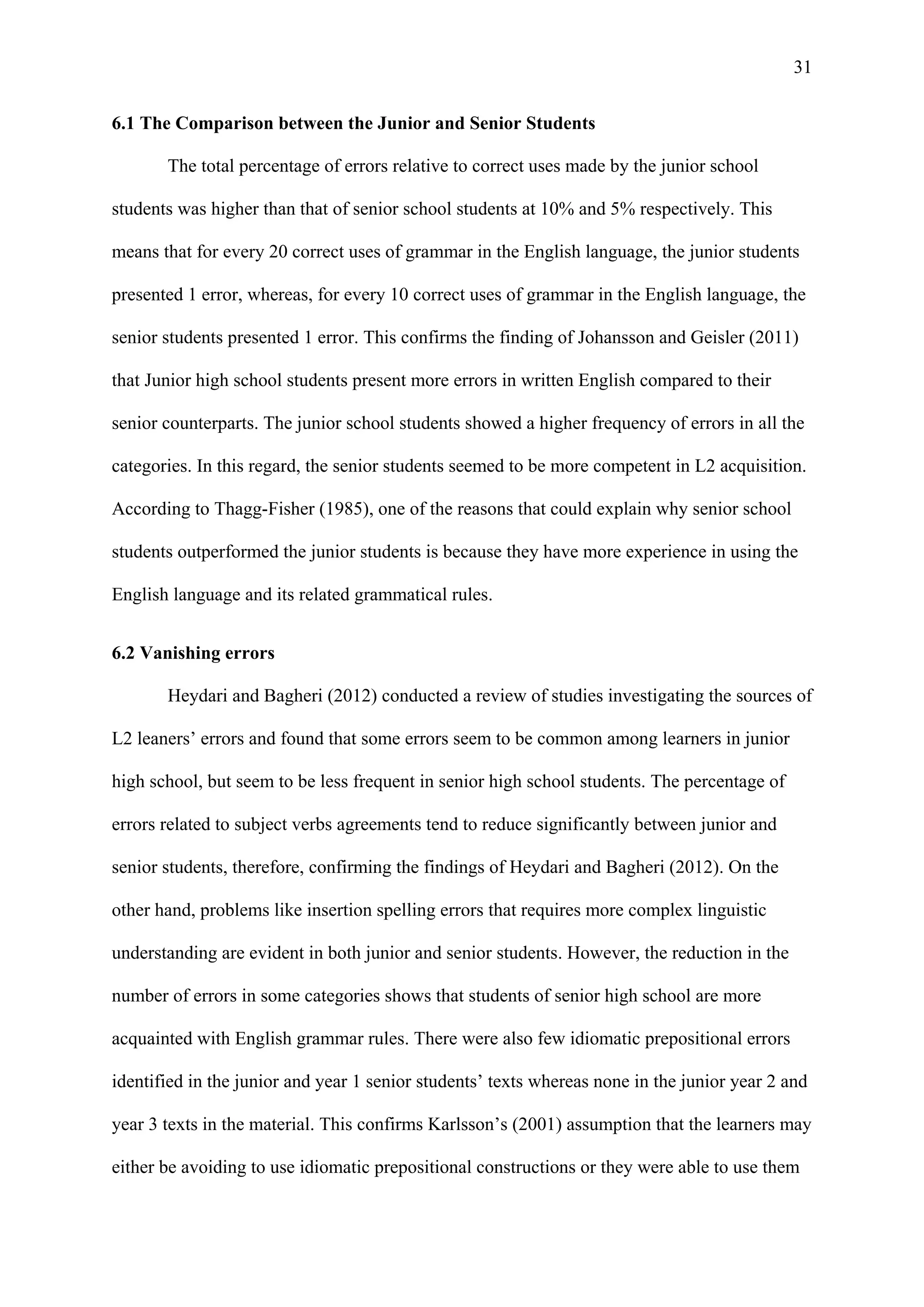
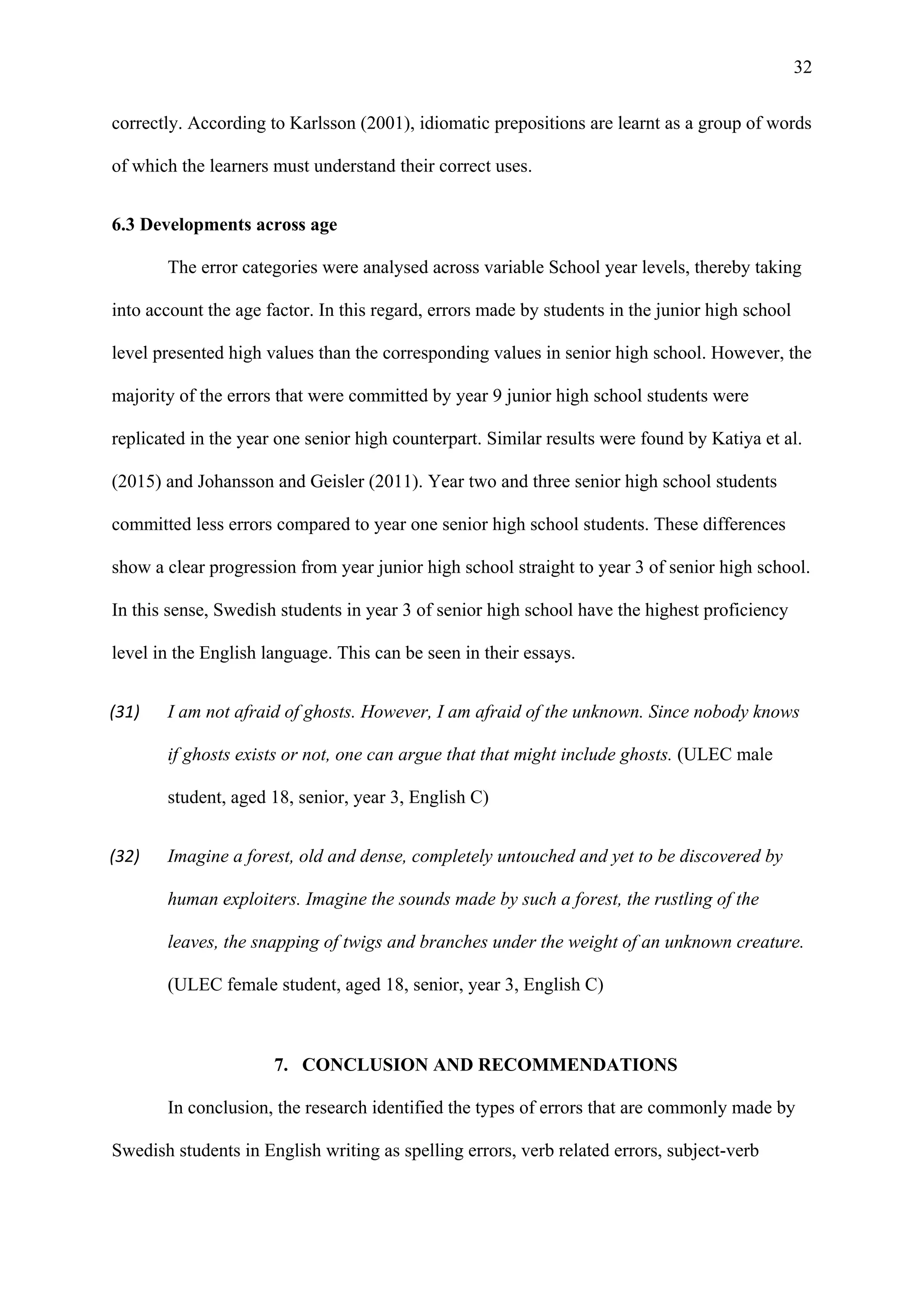
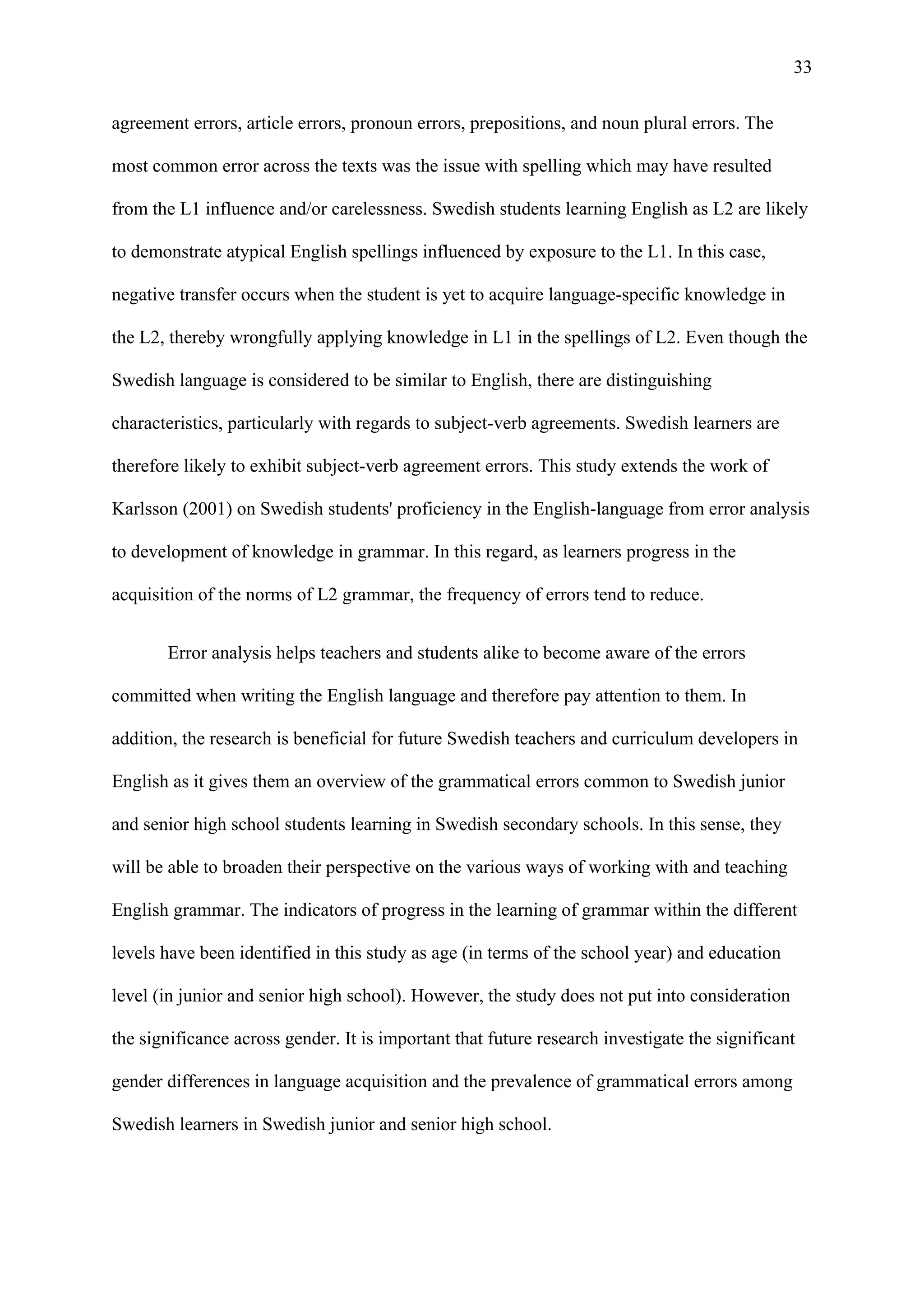
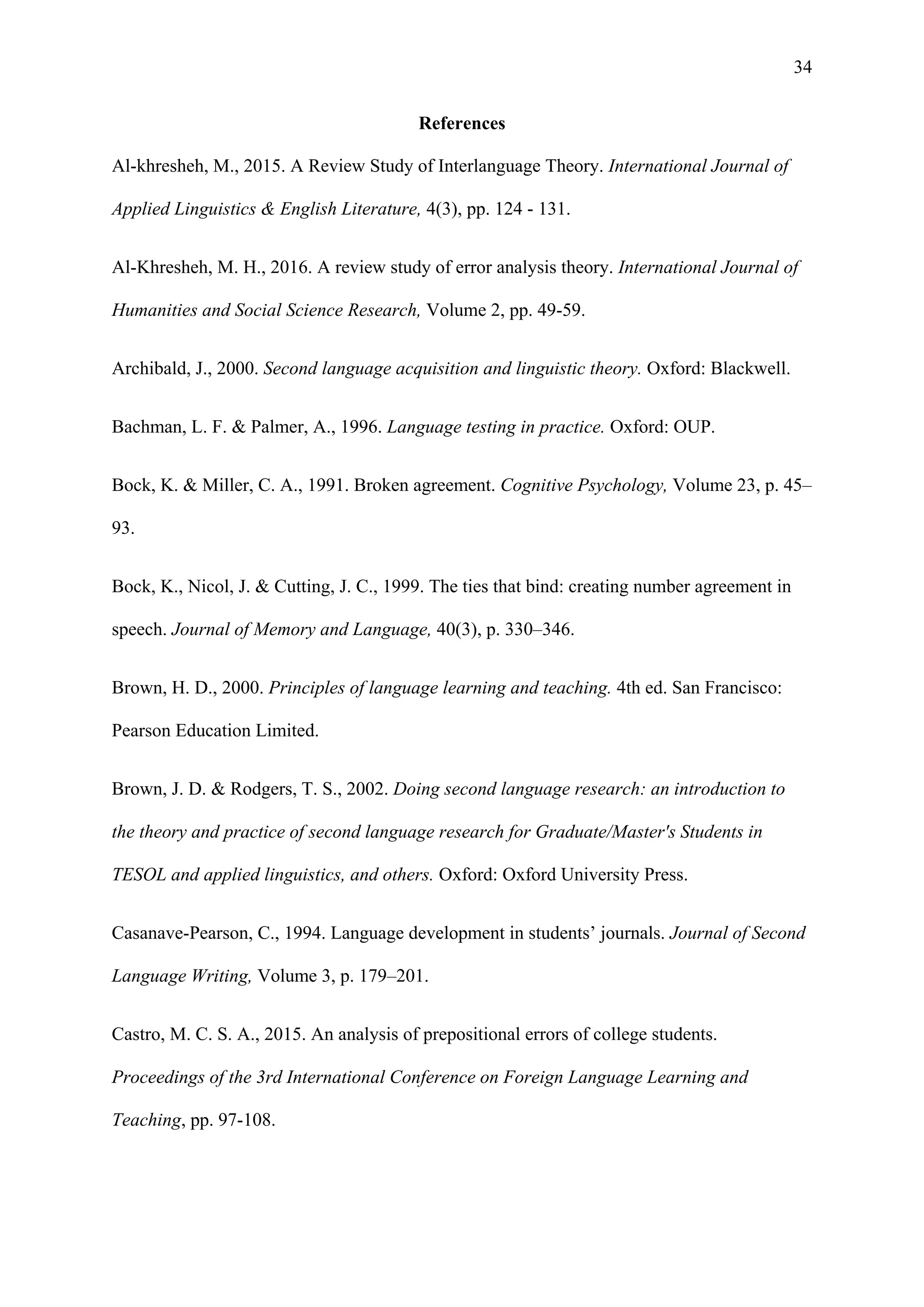
![35
Cook, V. J., 1999. Teaching spelling. [Online]
Available at: http://www.viviancook.uk/Writings/Papers/TeachingSpelling.htm
[Accessed 3 Sept 2019].
Corder, S. P., 1967. The significance of learners’ errors. In: J. Richards, ed. Error analysis:
Perspectives on second language acquisition. London: Longman, pp. 19-27.
Darus, S. & Subramaniam, K., 2009. Error analysis of the written English essays of
secondary school students in Malaysia: A case study. European journal of social sciences,
8(3), pp. 483-495.
Doughty, C. J. & Michael, H. L., 2005. The handbook of second language acquisition the
handbook of second language acquisition. Oxford: Blackwell.
Ellis, R., 1994. The Study of Second Language Acquisition. s.l.:Oxford University Press.
Ellis, R., 1997. SLA Research and Language Teaching. Oxford: Oxford University Press.
Ellis, R. & Barkhuizen, G. P., 2005. Analysing learner language. Oxford: Oxford University
Press.
Gardner, R. C., 2001. Integrative motivation and second language acquisition. Motivation
and second language acquisition, Volume 23, pp. 1-19.
Heydari, P. & Bagheri, M. S., 2012. Error Analysis: Sources of L2 Learners' Errors. Theory
& Practice in Language Studies, 2(8).
Johansson, C. & Geisler, C., 2009. The Uppsala Learner English Corpus. A new corpus of
Swedish high school students’ writing. In: Multilingualism. Proceedings of the 23rd
Scandinavian conference of linguistics. Uppsala: Acta Universitatis Upsaliensis. Studia
Linguistica Upsaliensia 8, p. 181–190.](https://image.slidesharecdn.com/secondlanguageacquestionerrorsanalysis-200126131706/75/Second-language-acquestion-errors-analysis-35-2048.jpg)
